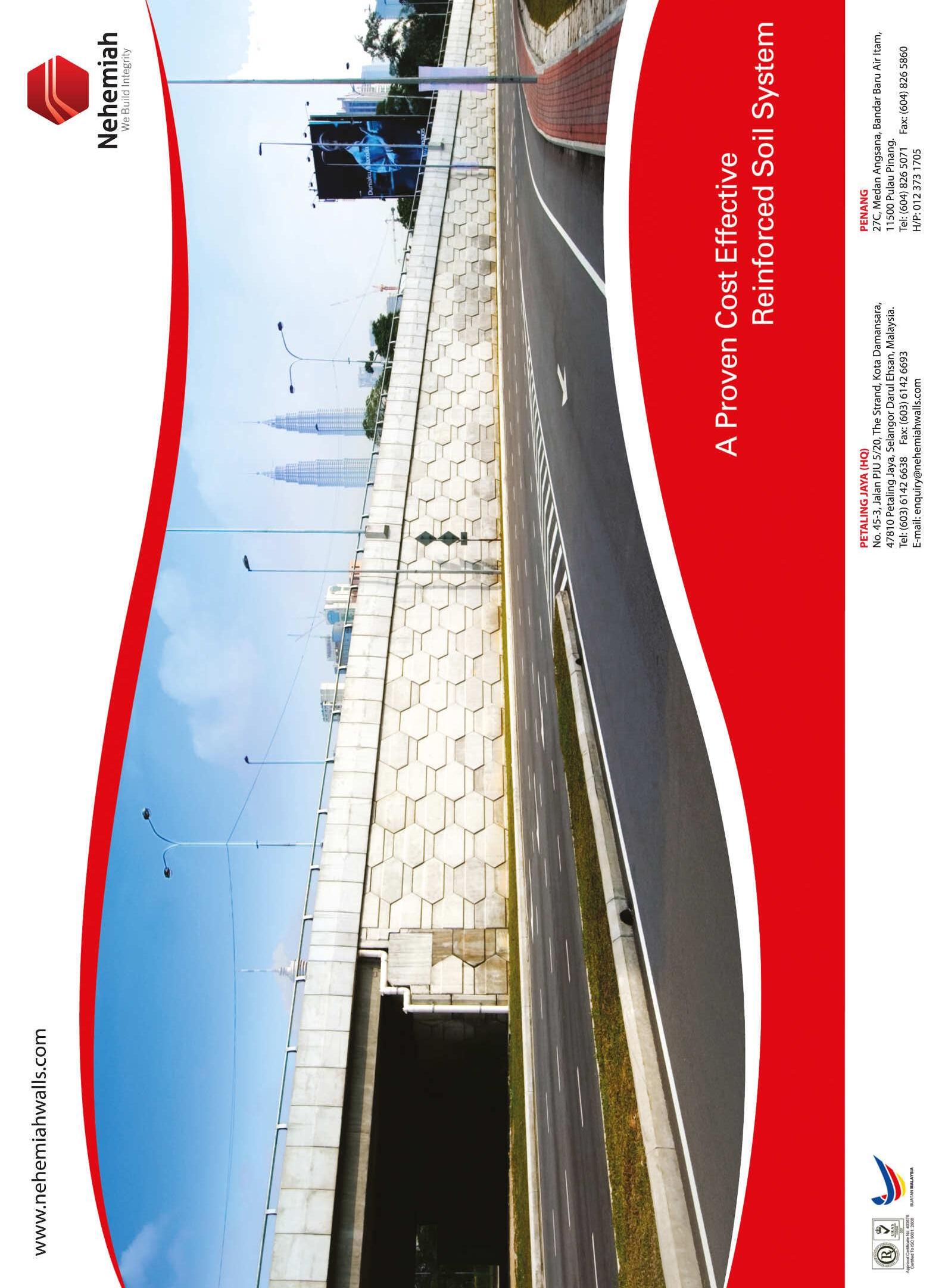




































Number 03, March 2016
MAJLIS BAGI SESI 2015/2016 (IEM COUNCIL SESSION 2015/2016)
YANG DIPERTUA / PRESIDENT
Y.Bhg. Dato’ Ir. Lim Chow Hock
TIMBALAN YANG DIPERTUA / DEPUTY PRESIDENT
Ir. Tan Yean Chin
NAIB YANG DIPERTUA / VICE PRESIDENTS
Y.Bhg. Dato’ Ir. Dr Andy Seo Kian Haw, Ir. Lee Weng Onn, Ir. Gopal Narian Kuty, Ir. Prof. Dr Ruslan bin Hassan, Ir. Lai Sze Ching, Ir. Lee Boon Chong, Ir. David Lai Kong Phooi
SETIAUSAHA KEHORMAT / HONORARY SECRETARY
Ir. Yam Teong Sian
BENDAHARI KEHORMAT / HONORARY TREASURER
Ir. Prof. Dr Jefrey Chiang Choong Luin
BEKAS YANG DIPERTUA TERAKHIR / IMMEDIATE PAST PRESIDENT
Ir. Choo Kok Beng
BEKAS YANG DIPERTUA / PAST PRESIDENTS
Y.Bhg. Academician Tan Sri Dato’ Ir. (Dr) Hj. Ahmad Zaidee bin Laidin, Y.Bhg. Dato’ Ir. Dr Gue See Sew, Y.Bhg. Academician Dato’ Ir. Prof. Dr Chuah Hean Teik, Ir. Vincent Chen Kim Kieong
WAKIL AWAM / CIVIL REPRESENTATIVE
Ir. Prof. Dr Mohd. Zamin bin Jumaat
WAKIL MEKANIKAL / MECHANICAL REPRESENTATIVE
Ir. Dr Kannan M. Munisamy
WAKIL ELEKTRIK / ELECTRICAL REPRESENTATIVE
Y.Bhg. Dato’ Ir. Ali Askar bin Sher Mohamad
WAKIL STRUKTUR / STRUCTURAL REPRESENTATIVE
Ir. Hooi Wing Chuen
WAKIL KIMIA / CHEMICAL REPRESENTATIVE
Ir. Prof. Dr Thomas Choong Chean Yaw
WAKIL LAIN-LAIN DISPLIN / REPRESENTATIVE TO OTHER DISCIPLINES
Ir. S. Kumar a/l Subramaniam
WAKIL MULTIMEDIA DAN ICT / ICT AND MULTIMEDIA REPRESENTATIVE
Engr. Abdul Fatah bin Mohd. Yaim, M.I.E.M.
AHLI MAJLIS / COUNCIL MEMBERS
Ir. Dr Tan Chee Fai, Ir. Tiong Ngo Pu, Ir. Yau Chau Fong, Ir. Teh Piaw Ngi, Ir. Kim Kek Seong, Ir. Chong Chin Meow, Ir. Chin Kuan Hwa, Ir. Assoc. Prof. Dr Vigna Kumaran Ramachandaramurthy, Ir. Lee Cheng Pay, Ir. Ong Ching Loon, Ir. Gary Lim Eng Hwa, Y.Bhg. Dato’ Ir. Noor Azmi bin Jaafar, Ir. Aminuddin bin Mohd Baki, Ir. Mohd Radzi bin Salleh, Ir. Ong Sang Woh, Ir. Mohd Khir bin Muhammad, Ir. Assoc. Prof. Dr Norlida Bini Buniyamin, Y. Bhg. Dato’ Ir. Hanapi bin Mohamad Noor, Ir. Dr Ahmad Anuar bin Othman, Ir. Ishak bin Abdul Rahman, Ir. PE Chong, Ir. Ng Yong Kong, Ir. Tejinder Singh, Ir. Sreedaran a/l Raman, Ir. Roger Wong Chin Weng
AHLI MAJLIS JEMPUTAN / INVITED COUNCIL MEMBERS
Y. Bhg. Datuk Ir. Rosaline Ganendra, Y. Bhg. Dato’ Ir. Abdul Rashid bin Maidin, Y.Bhg. Dato’ Ir. Mohd Azmi bin Ismail
PENGERUSI CAWANGAN / BRANCH CHAIRMAN
1. Pulau Pinang: Ir. Dr Mui Kai Yin
2. Selatan: Ir. Assoc. Prof. Hayai bini Abdullah
3. Perak: Ir. Lau Win Sang
4. Kedah-Perlis: Ir. Hj. Abdullah bin Othman
5. Negeri Sembilan: Ir. Shahrin Amri bin Jahari
6. Kelantan: Ir. Mohamad Zaki bin Mat
7. Terengganu: Ir. Abdullah Zawawi bin Haji Mohd. Noor
8. Melaka: Ir. Nur Fazil Noor Mohamed
9. Sarawak: Ir. Haidel Heli
10. Sabah: Ir. Yahiya bin Awang Kahar
11. Miri: Ir. Steven Chin Hui Seng
12. Pahang: Y. Bhg. Dato’ Ir. Hj. Abdul Jalil bin Hj. Mohamed
AHLI JAWATANKUASA INFORMASI DAN PENERBITAN / STANDING COMMITTEE ON INFORMATION AND PUBLICATIONS 2015/2016
Pengerusi/Chairman: Ir. Prof. Dr Ruslan Hassan Naib Pengerusi/Vice Chairman: Ir. Mohd. Khir Muhammad Seiausaha/Secretary: Ir. Lau Tai Onn Ketua Pengarang/Chief Editor: Ir. Prof. Dr Ruslan Hassan Pengarang Bulein/Bullein Editor: Ir. Mohd. Khir Muhammad Pengarang Prinsipal Jurnal/Principal Journal Editor: Ir. Prof. Dr Dominic Foo Chwan Yee Pengerusi Perpustakaan/Library Chairman: Ir. C.M.M. Aboobucker Ahli-Ahli/Commitee Members: Y.Bhg. Datuk Ir. Prof. Dr Ow Chee Sheng, Engr. Abdul Fatah bin Mohamed Yaim M.I.E.M., Ir. Dr Kannan a/l M. Munisamy, Ir. Chin Mee Poon, Ir. Yee Thien Seng, Ir. Ong Guan Hock, Engr. Dr Wang Hong Kok F.I.E.M., Ir. Dr Oh Seong Por, Ir. Dr Aminuddin Mohd Baki, Ir. Tejinder Singh
LEMBAGA PENGARANG/EDITORIAL BOARD 2015/2016 Ketua Pengarang/Chief Editor: Ir. Prof. Dr Ruslan Hassan Pengarang Bulein/Bullein Editor: Ir. Mohd. Khir Muhammad Pengarang Jurnal/Journal Editor: Ir. Prof. Dr Dominic Foo Chwan Yee Ahli-ahli/Commitee Members: Ir. Ong Guan Hock, Ir. Lau Tai Onn, Ir. Yee Thien Seng, Engr. Dr Wang Hong Kok F.I.E.M. Secretariats: Janet Lim, May Lee
IEM Registered on 1 May 1959 THE INSTITUTION OF ENGINEERS, MALAYSIA
COVER NOTE
The 33rd Conference of ASEAN Engineering Organization (CAFEO 33), November 2015 5



COVER STORY CAFEO 33 A Huge Success ...................................6 6 - 9
FEATURE ARTICLES
12 - 29
HolisticApproach to HealthcareAsset Management ........................................................12
IEM Employment Survey 2014 Report ..................18
Bauxite Mining:An Engineer’s Perspectives ..........25
30 - 41
YSEALI Professional Fellow: From Malaysia to White House ........................................................30
KVMRT Electric Train Assembly Plant, Hulu Selangor ..............................................................33
Designing Ionic Liquid Mixture as Carbon Capture Solvent Using Systematic Visual Approach........37
METD Pre-AGM Forum on Renewable Energy in Malaysia ..............................................................38
Box Jacking in Urban Areas ................................40
GLOBE TREKKING
Naha’s Giant Tug-of-War
43
PINK PAGE Professional Interview 45
BLUE PAGE Membership List 46 - 48


The 33rd Conference of ASEAN Engineering Organisation (CAFEO 33), November 2015
From a humble trading port developed by Francis Light in 1786, Penang has, over two centuries, grown into a vital, world-class hub for commerce, manufacturing, modernisation, cultures and tourism.
It has been dubbed Silicon Valley of Southeast Asia, most liveable and best city and a World Heritage Site. The iconic Penang Bridge was Southeast Asia’s longest in 1985 and Komtar Tower was Asia’s tallest building in 1986. Today the Second Penang Bridge is even longer.
Like most big ASEAN cities, Penang’s tremendous growth was largely due to the many engineers working diligently behind the scene. As key builders, engineers continue to face up to the challenges of designing and constructing many future ASEAN “world cities”.
We were honoured to host CAFEO 33 in November, 2015, with the theme “From Light To Bytes: ASEAN Engineering Evolution and Future Challenges”. Taking part were more than 1,000 engineers and delegates from ASEAN and other countries and once again, CAFEO 33 served as a platform for regional engineers to network for future collaborations and greater success.
My heartfelt appreciation goes to all members of the Organising Committee for their dedication and hard work to make this regional conference a success. We are truly impressedbytheoverwhelmingsupportfromallparties,includingsponsorsandadvertisers, for their kind contributions and support for the Conference.
This year, CAFEO 34 will be hosted by The Philippines. We shall soon meet again!
DIMENSION PUBLISHING SDN. BHD. (449732-T)
Level 18-01-03, PJX-HM Shah Tower, No. 16A, Persiaran Barat, 46050 Petaling Jaya, Selangor Darul Ehsan, Malaysia. Tel: +(603) 7493 1049 Fax: +(603) 7493 1047 E-mail: info@dimensionpublishing.com Website: www.dimensionpublishing.com
For adverisement placements and subscripions, please contact: DIMENSION PUBLISHING SDN. BHD. (449732-T) at +(603) 7493 1049, or E-mail: info@dimensionpublishing.com
Subscripion Department E-mail: info@dimensionpublishing.com
Printed by
HOFFSET PRINTING SDN. BHD. (667106-V) No. 1, Jalan TPK 1/6, Taman Perindustrian Kinrara, 47180 Puchong, Selangor Darul Ehsan, Malaysia. Tel: +(603) 8075 7222 Fax: +(603) 8075 7333
Mailer
PERFECT MAIL SERVICES (648839-P)
14 Jalan TSB 2, Taman Perindustrian Sungai Buloh, Sungai Buloh, Selangor Darul Ehsan, Malaysia. Tel: +(603) 6156 5288
JURUTERA MONTHLY CIRCULATION: 36,000 COPIES
Submission or placement of aricles in JURUTERA could be made to the:Chief Editor
THE INSTITUTION OF ENGINEERS, MALAYSIA (IEM) Bangunan Ingenieur, Lots 60 & 62, Jalan 52/4, P.O. Box 223 (Jalan Sultan), 46720 Petaling Jaya, Selangor. Tel: +(603) 7968 4001/4002 Fax: +(603) 7957 7678
E-mail: pub@iem.org.my or sec@iem.org.my IEM Website: htp://www.myiem.org.my © 2016, The Insituion of Engineers, Malaysia (IEM) and Dimension Publishing Sdn. Bhd.
Chairman ROBERT MEBRUER CEO/Publisher PATRICK LEUNG
General Manager SHIRLEY THAM shirley@dimensionpublishing.com
Head of Markeing & Business Development JOSEPH HOW joseph@dimensionpublishing.com
Editor TAN BEE HONG bee@dimensionpublishing.com
Contribuing Writers PUTRI ZANINA & ZOE PHOON putri@dimensionpublishing.com zoe@dimensionpublishing.com
Senior Graphic Designer SUMATHI MANOKARAN sumathi@dimensionpublishing.com
Graphic Designer NABEELA AHMAD beela@dimensionpublishing.com
Adverising Consultants AZIM SHAARI & THAM CHOON KIT azim@dimensionpublishing.com ckit@dimensionpublishing.com
Accounts cum Admin Execuive YEN YIN yenyin@dimensionpublishing.com
PUBLICATION DISCLAIMER
The publicaion has been compiled by both IEM and Dimension with great care and they disclaimanydutytoinvesigateanyproducts,process,services,designsandthelikewhichmay be described in this publicaion. The appearance of any informaion in this publicaion does notnecessarilyconsituteendorsement by IEMand Dimension. Thereisnoguaranteethat the informaioninthis publicaionisfreefromerrors.IEMandDimensiondonotnecessarilyagree with the statement or the opinion expresssed in this publicaion.
COPYRIGHT JURUTERA Bullein of IEM is the oicial magazine of The Insituion of Engineers, Malaysia
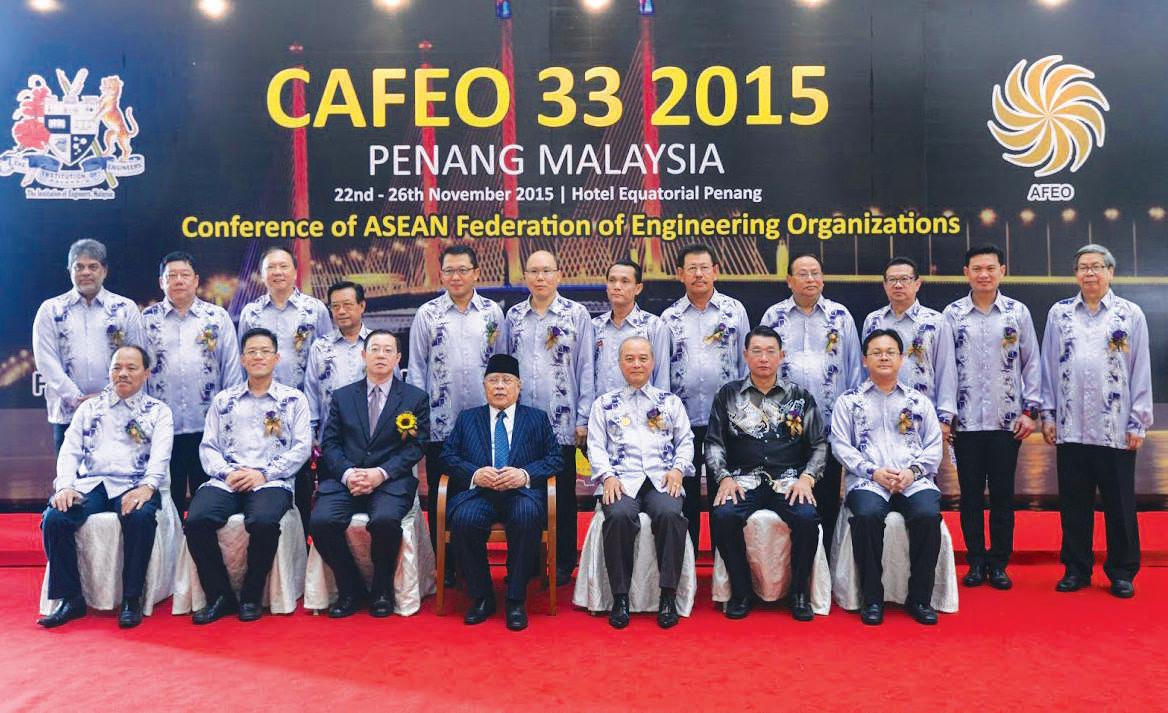
The ASEAN Federation of Engineering Organisation (AFEO) is a nongovernmental organisation afiliated to the ASEAN Secretariat as an ASEAN Civil Society Organisation (CSO) since 1985. Its members comprise engineering institutions and unions of ASEAN countries.
Its objectives are to promote goodwill, understanding, cooperation and exchange of ideas and experiences in the fields of education, science, engineering, technology, environment, human resource, training and registration of professional engineers.
The Conference of the ASEAN Federation of Engineering Organisations (CAFEO) has been organised annually on rotation basis amongst the 10 ASEAN member countries: Brunei, Indonesia, Malaysia, Singapore, Philippines, Thailand, Cambodia, Vietnam, Laos and Myanmar since 1982. The conference has also attracted the participation of engineering organisations from the US, Canada, Japan, South Korea, Australia, China, India, Germany and the UK as well as the World Federation of Engineering Organisations (WFEO), ASEAN Academy of
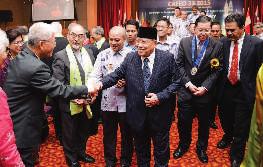
Engineering and Technology (AAET) and The Federation of Engineering Institutions of Asia and the Pacific (FEIAP).
This year, The Institution of Engineers, Malaysia (IEM) was given the honour to host CAFEO 33 in Penang.
The event held at Equatorial Hotel, Penang on 22-26 November, 2015 attracted more than 1,200 delegates from especially the ASEAN countries. Malaysia held the chair of AFEO for 2015 until the conclusion of CAFEO 33. The theme was “The Lights To Bytes:ASEAN Engineering Evolution and Future Challenges”.
PRE-CONFERENCE ACTIVITIES (23 NOVEMBER 2015)
CAFEO 33 was preceded by an early morning golf competition among the heads of delegations and some delegates.
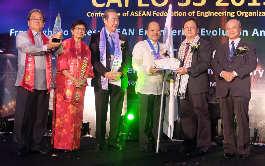

More than 120 Young Engineers of the ASEAN Federation of Engineering Organisation (YEAFEO) delegates embraced a greener lifestyle while learning more about the UNESCO’s World Heritage Site of George Town in the Penang Treasure Hunt. Apart from promoting Penang’s world-famous and diverse heritage attractions, the organisers also hoped to popularise the concept of cycling and make it an enjoyable experience.
On hand to welcome the 34 Women Engineers of ASEAN Federation of Engineering Organisation (WEAFEO) delegates for the site visit to the Penang 2nd Bridge was Dato’ Ir. Dr Ismail Mohamed Taib, Managing Director, Jambatan Kedua Sdn. Bhd. The WEAFEO delegates were thennetworkedandenjoyedadeliciousseafoodlunchat Pulau Aman. WEAFEO thoroughly enjoyed the company of JKSB staff who also organised the boat trip to the 2nd Penang Bridge.
(23 NOVEMBER 2015)
For the duration of the conference, the hotel was abuzz with WorkGroup sessions, workshops, technical seminars, country report sessions, discussions and forums taking place simultaneously.
To start the Conference, the WorkGroups held their meetings to look into various issues affecting the ASEAN countries. Three WorkGroups were initiated upon request from members. The newly formed groups were:
1. Smart Sustainable Cities, chaired by The Institution of Engineers, Singapore (IES)
2. Mobility of Engineers Forum, chaired by Philippines Technological Council (PTC)
3. Energy, chaired by The Institution of Engineers, Malaysia (IEM) and Environmental Engineering WorkGroup, chaired by Pertubuhan Ukur, Jurutera dan Akitek, Burnei, (PUJA) were formed after the separation of work from the previous Working Group on Energy and Environment.
The other WorkGroups already in existence were Education and Capacity Building, chaired by The InstitutionofEngineers,Singapore(IES),Transportationand Logistic chaired by Engineering Institute of Thailand (EIT), and Disaster Preparedness, Mitigation and Management, also chaired by Engineering Institute of Thailand (EIT).
The meetings went well as planned, including the ASEAN Award meeting chaired by the President of Myanmar Engineering Society (MES). The Awards Committee selected and recognised outstanding projects as well as engineers from the region. There were 23 nominees for the Engineering Achievement Project Award this year and nine nominees for the Engineering Achievement Individual Award.
The Welcoming Reception, held on the eve of the Opening Ceremony, allowed more than 1,200 engineers
from ASEAN and Asia Pacific countries to meet, network and get know each other. It was very well attended, with plenty of local food and drinks to go along with it. The guest of honour was Mr. Danny Law Heng Kiang, Penang State Executive Councillor for Tourism Development.
In his welcome speech, the Organising Chairman of CAFEO 33 who is also the Immediate Past Branch Chairman, Ir. Paul Phor Chi Wei, said that the highly urbanised and industrialised Penang was one of the most developed and economically important states in the country, as well as a thriving tourist destination. He added that engineers should play an important role in the development of the country.
In his speech, IEM President Dato’ Ir. Lim Chow Hock said CAFEO 33 was a conference that covered essential issues such as engineering education, energy, transportation, environment and natural disaster risk management. He urged all ASEAN engineers to register with AFEO.
The Welcoming Reception was concluded with the AER certification presentation to 386 ASEAN Engineers, launching of YEAFEO Newsletter and YEAFEO Heritage Hunt Prize Presentation.
The Governor of Penang, Tuan Yang Terutama Tun Dato' Seri Utama (Dr) Haji Abdul Rahman bin Haji Abbas, officiated at the grand opening ceremony. The Chief Minister of Penang was also present.
In the opening speech, the Chief Minister of Penang YAB Tuan Lim Guan Eng said that the ASEAN Economy Community accelerated business liberalisation among ASEAN countries, engendering new business opportunities and competition. He strongly believed that technical personnel should be given the opportunity to lead in formulating policy, benchmarking standards and adopting a sciencebased education system. He urged engineers to form a dynamic workforce in the country to draw up the transformation master plan.
The opening ceremony was followed by a cultural performance and visits to exhibition booths by the VVIPs.
The AFEO Distinguished Honorary Patron is the most prestigious and highest AFEO award. It was conferred on Tun Dato' Seri Utama (Dr) Haji Abdul Rahman bin Haji Abbas. The Distinguished Honorary Fellows were conferred on YAB Tuan Lim Guan Eng, Mr. Rogelio L. Singson (Secretary of Public Works & Highway Department, Philippines), His Excellency Thura U , Shwe Mann (Speaker of Pyithu Hluttaw, the lower house of the Burmese Parliament) and Dr Ir. Indroyono Soesillo (Co-ordinating Minister for Maritime, Indonesia).
CAFEO 33 provided a forum for the sharing and exchanging of experience and expertise to create awareness and understanding of recent developments and trends in the field of engineering and technology in ASEAN region. In total, there were 70 technical papers, including papers from keynote speakers and invited speakers.
The keynote speakers were Academician Dato’ Ir. Dr Lee Yee Cheong and Dato’ Wong Siew Hai.
Besides the conference sessions, WorkGroup meetings, ASEAN Engineering Register Commission meeting, Federation of Engineering Institution of Asia and the Pacific (FEIAP) also held Exco meetings in conjunction with CAFEO 33. The Young Engineers of AFEO (YEAFEO) and Woman Engineers of AFEO (WEAFEO) also held their meetings as scheduled.
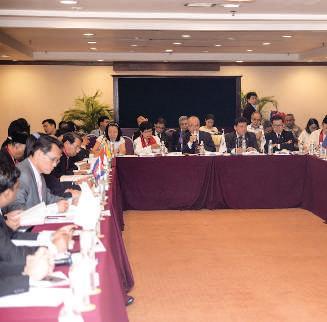
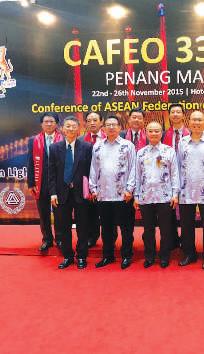
WEAFEO was formed only in 2013 to discuss women engineer issues within the ASEAN countries.
Finally, all findings and proposals were presented to the AFEO Governing Board which summed up the activities on 25 November 2015. The Board members then signed the Penang Declaration after the Board Meeting and an exchange of tokens of appreciation took place, with photo sessions for all.
Country Reports were presented by the respective heads of member organisations and the day ended with the ASEAN Engineers Register Commission meeting in the evening.
On the evening of 24 November, YEAFEO organised a special seafood dinner on the mainland, followed by an evening of networking in George Town. The next day, the young engineers group went on a specially arranged technical visit to the newly re-developed SPICE Indoor Stadium.
The AFEO Board meeting started with the observing of a minute’s silence for the late AFEO Past Honorary Advisor and MES Past President U Than Myint.
The board discussed the possibility of member organisations coming together with a Declaration to be announced as the Penang Declaration.
It also discussed reports made by AFEO Awards Committee, AER Head Commissioner, AFEO Working Groups, YEAFEO, WEAFEO, AFEO 2016 budget and election of the Chairman and Vice Chairman of AFEO Governing Board 2016.
Break times provided respite from the serious business of the day and gave delegates time to network and catch up with colleagues and peers.
There were various engineering displays at the exhibition booths located at the entrance to the Conference ballroom.

The exhibition booths and a mini bazaar, thoughtfully puttogetherbytheorganiser,weremuchfrequentedand appreciated. There were 16 exhibitors which promoted engineering solutions to the industry while the mini bazaar promoted popular tourism products.
(25 NOVEMBER 2015)
The IEM Penang Branch’s 48th Anniversary Dinner cum CAFEO 33 Closing Banquet was graced by delegates, fellow engineers and distinguished local guests as well as those from ASEAN and other parts of the world.
On behalf of IEM Penang Branch, Ir. Dr Mui Kai Yin congratulated the CAFEO 33 Organising Committee and Ir. Paul Phor for successfully hosting the regional conference in Penang.
In his closing remarks, Penang State Executive Councillor for Local Government, Traffic Management and Flood Mitigation, Mr. Chow Kon Yeow, said the CAFEO 33 theme not only fitted the development of the island into the Silicon Valley of the East (some have even labelled Penang as the “Tech Tiger”) but it was also applicable to ASEAN countries and the rest of the world.
Intheevening,therewerelivelyactivitiesincludingthe presentation of AFEO Engineering Achievement Awards for best engineering projects, feats and individuals of ASEAN countries. Outstanding engineers and eminent personalities were conferred honorary titles. This was followed by cultural performances as delegates and young engineers from the various countries sang and danced.

The handover ceremony was also held during the grand Gala Dinner. By rotation, after Malaysia, it now falls on PTC (Philippines) to hold the AFEO Chair and to host CAFEO 34 in 2016. To mark the end of CAFEO 33, Dato’ Lim Chow Hock handed the AFEO flag to the PTC President, Engr. Fred Monosada.
The evening continued with lots of singing and dancing, marking the end of a very successful conference.
Theorganisershadprovided3differentoptionswithatotal ofsevensitesfortechnicalvisitstovariousplacesofinterests on 26 November. These were to a dam, new industrial park, free trade zone, digital products manufacturer, car maker, water front development project and steel plant. Places were Mengkuang Dam Expansion Project, Sandisk Storage Malaysia Sdn. Bhd., Batu Kawan Industrial Park, Bayan Lepas Free Trade Zone, Boon Siew Honda Factory, The Light Waterfront Development Project and Southern Steel Fabrication Plan.
The Women Engineers Section of The Institution of Engineers,Malaysia(IEMWE)hostedtheWomenEngineers Forum on 25 November 2015 and Women Engineers Summit on 26 November 2015. These addressed issues relating to women engineers and shared perspectives in devising strategies to address women participation in engineering as prospects for the future.
WEAFEO delegates were invited to the Women Engineers Forum and Women Engineers Summit to highlight the outstanding achievements of WEAFEO delegates in Science, Technology, Engineering and Mathematics (STEM).
The invited keynotes speakers were Dato’ Ir. Dr Ismail bin Mohamed Taib and Datuk Ir. Rosaline Ganendra. The featured ASEAN speakers for Women Engineers Forum
were Engr. Camel C. Gacho (WEN of the Philippines), Ms. Khin Sandar Tun (MES, Myanmar), Er. Emily Tan (IES, Singapore) and Ms. Liza Ngamtrakulpanit (TWEA, Thailand).
The invaluable experiences, insights and comments of the panelist speakers and participants of the WE Summit 2015 were another step in the journey towards increased visibility of women in engineering and technology.
We wish to thank AFEO Heads of Delegations and delegates who had come from far and near, for their enthusiastic participation and the generous sponsors, without whom CAFEO 33 would not have achieved such great success. Thank you very much. See you all at CAFEO 34 in The Philippines
The substantial number of technical papers and the large number of participants from overseas went towards making CAFEO 33 the great success that it was. Malaysia and IEM in particular, were the proud hosts while IEM Penang Branch had the honour and privilege of being the organiser.
With such enormous input, CAFEO 33 was able to generate sound recommendations that could contribute to the transformation of ASEAN into a region of enormous economic development with ample opportunities for businesses to grow. The ultimate aim was to enhance the quality of life for the ASEAN community.
This was in tandem with the formation of the ASEAN Economic Community (AEC) by end of 2015. CAFEO would serve as a catalyst to catapult further integration and mobility of engineers within the region. In Malaysia, the Registration of Engineers Act 1967 was amended to support the government policy to liberalise the service sector and, in particular, engineering services, to be in line with the objectives of the AEC.

As had been the practice for a while now, CAFEO 33 also afforded priority to the young and women engineers from the region, providing them with a platform to establish rapport for future engineering activities and collaborations.
The Philippines will host CAFEO 34 in 2016. Till we meet again, we bid “Selamat Jalan” to all delegates and “Mabuhay!”.
Editor's Note : The report for the Cover Story was contributed by Ir. Assoc. Professor Dr Leong Wai Yie and Ir. Paul Phor Chi Wei .
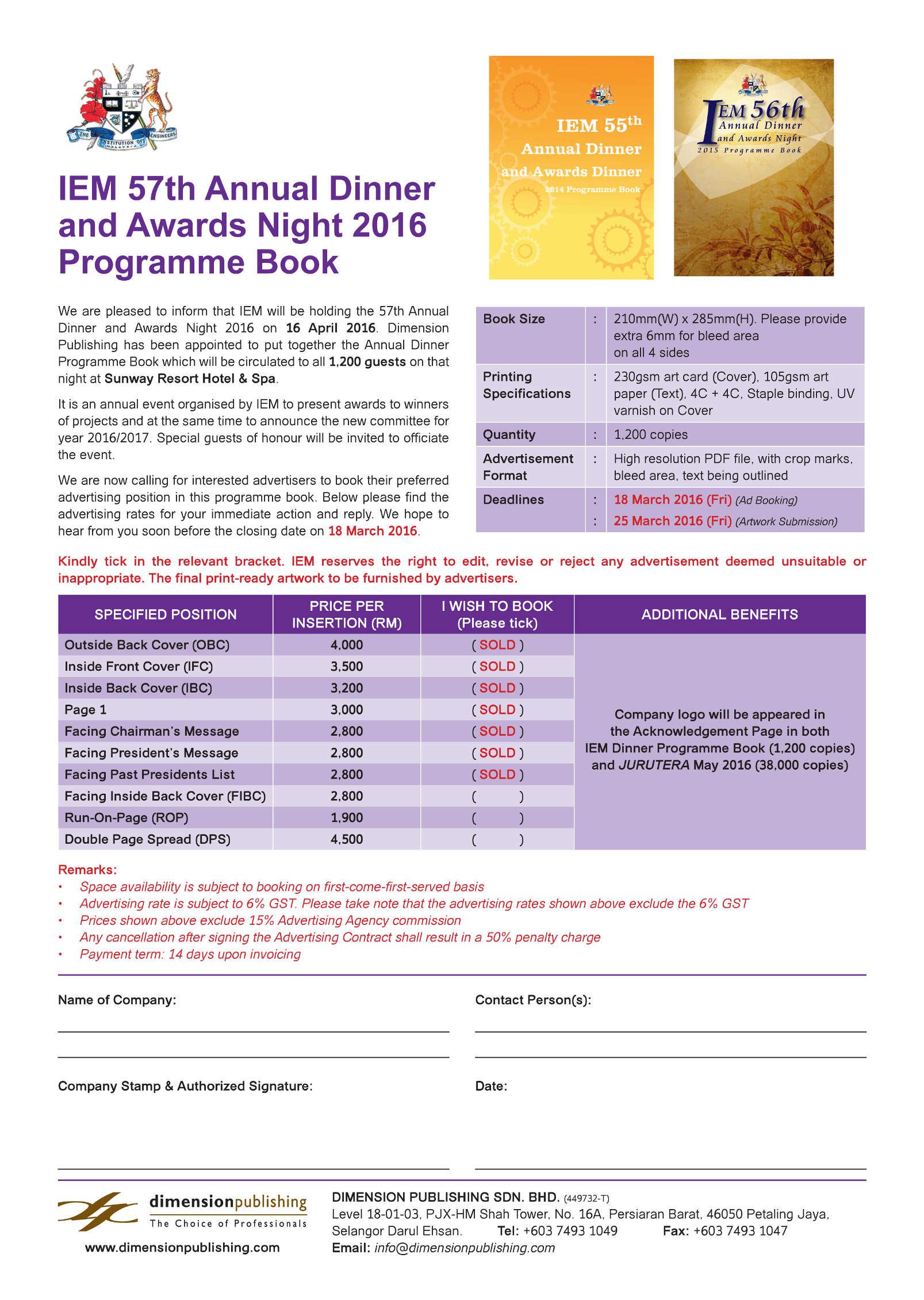

Ir. Chiam Teong Tee, aged 82, passed away peacefully at the University of Malaya Hospital on Saturday, 30 January 2016. Ir. Chiam was married to the late Mdm. Khoo Siew Choo. He is survived by his daughter, Elaine Chiam, son Harry Chiam Chen Yoong and four grandchildren.
Ir.ChiamwasborninPenangin1934.Hereceivedhissecondary school education at Penang Free School. He was one of the first batch of engineering students from the University of Malaya then in Singapore and graduated in 1958. He also obtained a Master in Engineering Science (MEngSc) from the University of New South Wales in 1968 under the UNESCO Fellowship. Ir. Chiam started his career in the Department of Irrigation and Drainage (DID) in 1958.
In 1962 he joined Law & Partners, a consulting engineering firm before going back to the University of Malaya in Kuala Lumpur as a lecturer in 1963 on the encouragement of the late Tan Sri Ir. Prof Chin Fung Kee. In 1971 he was appointed Deputy Dean and later, Dean of the Faculty of Engineering in 1973. In 1975, he retired from University Malaya and founded Perunding Bakti Sdn. Bhd., an engineering consultancy firm in the areas of civil, mechanical and electrical engineering. He was involved directly in many projects undertaken by the company, including drainage and irrigation works, highways, highrise buildings and housing developments.
Ir. Chiam worked very closely with the late Tan Sri Ir. Prof. Chin Fung Kee who was also his mentor, and became very involved with The Institution of Engineers, Malaysia (IEM) when Tan Sri Ir. Prof. Chin became the President of IEM. In his first year in IEM Council, Ir. Chiam initiated the complete redraft of thenewIEMConstitutionandBylaws(underthechairmanshipoftheLateTanSriIr.JGDaniel)including the use of the title “Ir.” for all the members of The Institution of Engineers, Malaysia, irrespective of their grades of membership. This title is today used by all professional engineers. Other relevant professional bodies, such as the Architects, Surveyors etc have subsequently followed suite, giving a title to their members!
Ir. Chiam was also instrumental in the introduction of the IEM/BEM Graduate Examination. In 1976, he and Dr Tam Chat Tim formulated the regulations for the Part 1 & 2 Examinations which enabled IEM to negotiate with the Council of Engineering Institutions (CEI), the predecessor of the Engineering Council (EC), to conduct the examinations. The objective of the Examinations is to provide an opportunity for young Malaysians sub-professionals who wish to upgrade themselves, and to achieve professional status through local professional examinations. The CEI gave its approval for IEM to use the CEI Examinations in August 1977 and the inaugural Examinations was held in May 1978 with 72 candidates approved to sit for Part 1 and another 13 candidates for Part 2 of the Examinations. Through the years many local sub-professionals benefitted from this examination and many of them went on to become very successful engineers.
Ir. Chiam actively served the engineering profession through IEM in various capacities for 50 years since the 1960s and in 1981, he was elected President of IEM. He was conferred the IEM Honorary Fellowship in 1986 and inducted into the IEM Engineering Hall of Fame in 2012 in recognition of his invaluable service to the Institution and the profession. Even though he no longer served in the IEM Council after 2006, he continued to give his service to IEM in other areas such as professional practice and arbitration.
Ir. Chiam has been an Arbitrator since 1981 and is on the IEM Arbitration Panel and the Regional CentreforArbitrationinKualaLumpur(KLRCA).HewasaFellowoftheMalaysianInstituteofArbitrators. He was also responsible for setting up the IEM Arbitration Committee when he was the IEM President in 1981 and helped prepare the initial draft of the IEM Arbitration Rules.
Ir. Chiam will be missed by all those who know him. May his soul rest in peace!

Editor, Jurutera

Healthcare facilities such as hospitals, rehabilitation centres and clinics are called “living buildings” because these are constantly undergoing changes due to changes in service needs, technological requirements and increase in patient loads. When a hospital is being built, considerations as to suitability of location, risks and future needs must be factored in to allow future expansion plans or refurbishments.
The key to extending the life of healthcare facilities is good operation and maintenance practice. There are many healthcare facilities which are in poor conditions and this will compromise the safety of patients and staff. Instead of being a place of healing and recuperation, the hospital will be a source of medicalerrorsandhazards.Here,wewilldiscuss theinteractionbetweenfacilitiesdevelopment, operations and maintenance practices in the holistic concept of asset management.
Healthcare facilities include hospital, rehabilitation centres and clinic. By definition, a hospital is a health care institution providing health treatment with specialised staff and equipment. Unlike other commercial building and facilities, a hospital building is most complex, due to many services and infrastructure requirements. These complexities come from the different requirements needed to serve the clinical service delivery while ensuring patients’ health, safety and wellbeing.
A hospital can be classified into the following categories:
General Huge complex and multidisciplinary with specialisation and referral centreforthestate.
District Multidisciplinary with some specialties. Referral from subdistrict hospitals.
Specialised Dedicatedtoaparticulardisease or sickness such as cancer, heart or psychiatric problems.
Teaching Facilities provide teaching for healthcare professionals and clinical services for patients.
Clinic An outpatient consultation place for new patients and follow-up services.
For a hospital to function properly, the following services must be available:
Core services: Trauma and Emergency Department, Imaging and Radiology Department, Operation Theatres and Critical Care Services, Surgical and Medical Wards, Specialist service e.g.Oncology, Dialysis, Dental etc.
Clinical support: Pathology, bio-laboratories, pharmacy, nuclear physic medicine, rehabilitation services, social and counselling, food and dietetic.
Non-clinical Support: Consumables stores, kitchen and cafeteria, biomedical and engineering(utilitiesplantrooms),housekeeping, linen and laundry, retail outlets, grounds and car park etc.
The challenge in designing a hospital is to ensure that patient flow and staff delivery services process are located at the most optimum positions. The workflow design and utilitiesrequirementsuchasHVACandelectrical systems must also meet healthcare standards.
Beyond the need for basic facilities, healthcare installation will now promote a healing hospital concept so that patients feel comfortableasthiswillpromotefasterrecovery.
The new hospital design places greater emphasis on requirements for disabled persons, lively colour wall and a facade that promotes therapy, fresh air, water features in term of greenery, energy efficiency and environment friendly. The other critical aspect is the privacy and security of the staff and the patients when the latter undergo treatment in the hospital.
In planning the location for a hospital, things to consider are that it should be safe from natural disasters such as floods and that the environment is healthy. The size and services will depend on the demographic of the population
it serves as well as the type of sickness that occurs in the area of coverage. Due to the complex utilities requirements, hospitals are rarely demolished or relocated, so most expansion plans will be made within the existing area. It is thus very important for the hospital management to have a strategic longterm development plan so that patient flow and clinical services can match the requirements of the patients while minimising the cost of operation and maintenance as needs grow.
Before a hospital can operate, there are many rules and regulations that need to be complied with. Some of these are:
• Act 586: Private Healthcare Facilities and Services Act 1998
• Act 737: Medical Device Acts 2012
• Act 615: Mental Health Act 2001
• Act 341: Fire Service Acts 1988
When it’s up and running, operations have to meet the hospital quality standard in the certification survey. The main thrust of the accreditation is to ensure patient and staff safety. In Malaysia, the two main accreditation bodies are Malaysian Society for Quality in Healthcare (MSQH) and Joint Commissioning International (JCI).
Otheraccreditationrequirementshavealsobeenadopted,suchasHACCP and GMP for food and pharmaceutical preparation and, more recently, the adoptionofAssetManagementStandardunderPAS55:2008/ISO55000standard and Energy Management Gold Standard (EMGS)/ ISO50000.
Hospital equipment and facilities are constantly changing, due to expansion of services, new equipment and technology, new standards, rules and regulations and obsolete equipment that needs to be upgraded. Though it is easy to replace mobile equipment, advanced imaging equipment such as MRI, CT scan or Tomotherapy machines, requires properly designed technical room and support utilities.
Most hospitals in the country are headed either by a doctor or an accountant. While the doctor is better at understanding service requirements and the accountant fully understands financial requirements, there is also a need to ensure the sustainability of hospital assets. Few hospitals, however, have a professional engineer specialising in health care operations and who can assistthehospitaltomatchfacilitiesrequirementswithservicesrequirementsand ultimately meeting the financial requirement. Hospitals usually only engage a consulting architect and engineer to look at the development in isolation rather than come up with a long-term strategic master plan for hospital development.
A typical life-cycle for an asset is depicted in Figure 1. It is important to note that the decision during asset creation (conceptual design and installation) will have a significant impact on the cost of operation and maintenance of equipment.
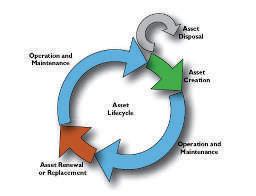
We are a supplier of high quality geosynthetic products used for soft soil stabilization, slope reinforcement, coastal erosion protection, river bank protection, landfills, drainage, road and railway construction.
NEXGRID GEOGRIDS
We also provide design, specification, bill of quantities, cost estimate and drawings free-of-charge.








6693
com Sales Team: Saufi (012-568 5611) Gordon (012-355 0872) Our Products: NEXTILE NON-WOVENS NEXFORCE HIGH-STRENGTH WOVENS


Accountants normally focus on capital expenditure requirements for acquiring assets. They are more interested in the financial return for the year. So it is the duty of an engineer to guide the accountant on the operating cost so that the overall cost of owning the asset can be ascertained. A typical total cost of ownership pattern is shown in Figure 2. The hospital management may be persuaded into acquiring cheaper equipment but in the end, has to pay for expensive repairs and maintenance services. If the hospital does not practise good maintenance regimes, then the equipment will fail to work, resulting in an interruption of services and costlier equipment replacement.

Thus it is important that the hospital adopts a long-term strategy for asset management to avoid service interruptions or even worse, place the patients’ safety and health in jeopardy.
The asset management framework for a hospital can be summarised using the graphical representation below:




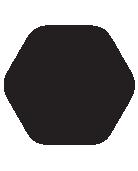




Instead of focusing on short-term issues and challenges, the hospital management must understand the importance of and support proper asset management for long-term benefits.
There must be an asset management policy that dictates asset acquisition, development, construction, operation and maintenance and disposal requirements. The policy has to outline the acceptable functional life-cycle for assets instead of depending on the depreciation method as per book value.
Toimplementthepolicy,therehastobeahospitalmanagementcommittee involving engineers as the drivers and the end users as the recipient of the asset.
The Asset Management strategy and maintenance management strategy

must work together to cover the whole asset life-cycle requirements. The hospital has to closely monitor assets and conditions so that the assets meet service requirements. To simplify the process, we have adopted the quality concept of plan, do, check and act. Asset
Management policy, strategy and plan, Asset development committee
management change procedures
strategy
Design and evaluation of total life costing, value engineering, Risk identification
and T&C procedures, Training and acceptance
Asset RegisterAsset register, AS BUILT drawings and O&M manuals
Management Matching and hand over the operation and maintenance requirements, Consolidating asset listing
Performance indicators, identify new needs
Every time an asset is being developed or procured, there should be a consensus and input on how it will operate and be maintained. Without this understanding, the asset may not serve its purpose accordingly.
There are many challenges in hospital maintenance. Listed here are some of the issues and the solutions.
1. Lack of understanding in asset and maintenance management standard. The challenge is to meet the equipment and service requirements.
2. Short-term development plan and lack of continuous improvement initiatives.
Team work approach in development plan where health care specialist professional engineers lead the team.
Asset management policy, strategy, plan and procedures to ensure long-term asset planning is available.
Regular performance review.
Continuous improvement based on performance.
3. Maintaining ageing facilities and trying to match the current standard and legislation.
Develop a strategic plan to maintain, upgrade, replace or demolish asset and facilities.
Enforcing the healthcare facilities standard for new asset.
4. Rapid change in technology and matching skills requirements.
Ensure there are trained professional engineers managing the facilities.
Continuous professional development training for the maintenance team. Ensure there’s technology transfer between equipment vendors and staff.
Monitoring, Predictive/preventive maintenance, consumables and contractor management
request/order/history
Permit to Work, JSA, FMEA Perform
Asset PerformanceEquipment efficiency, availability, OEE Service
Contractor performance, staff productivity
RCA, Equipment health assessment, KPIs Adopt
The hospital management has to adopt a long-term strategic plan for its assets to ensure that facilities meet service requirements and can be upgraded as required. With any asset acquisition, it must consider operation and maintenance requirements instead of just capital expenditure.
For this to happen, there has to be a Development Team comprising the asset owner, user and maintenance team. With constant changes in technology, the skill and competency of facilities engineers must also be continuously updated. Only with such understanding and skills can the maintenance strategy match equipment condition and performance. This way, the organisation will benefit from uninterrupted service while ensuring the health, safety and a pleasant environment for patients.
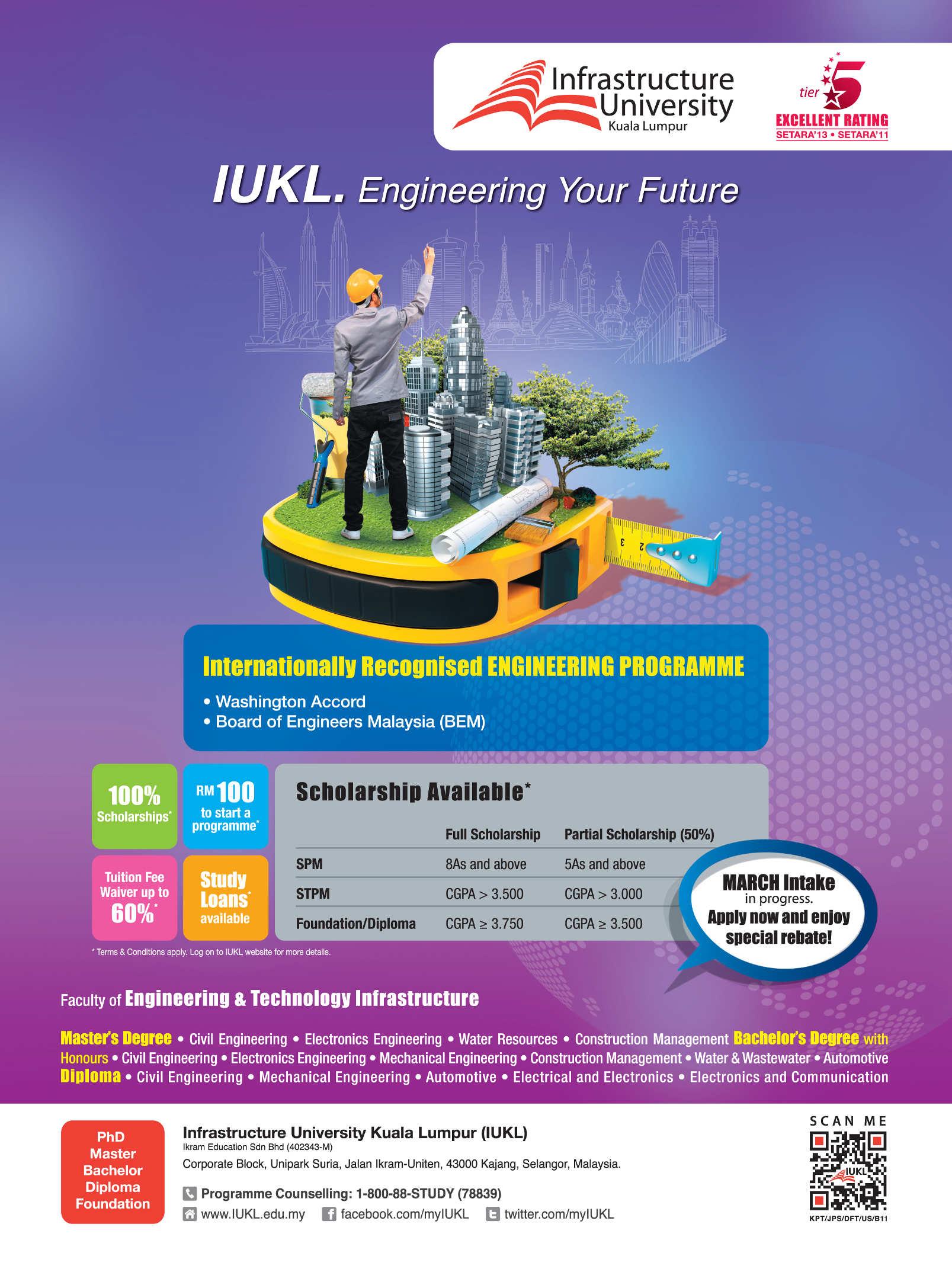
The IEM Employment Survey was conducted at the end of 2014. The deadline was 31 January 2015. The previous survey was carried out in 2009. Of 21,000 survey forms sent out to IEM members, only 952 responses were received before the closing date. This represented a survey sample size of 4.53% compared to 7.78% in 2009. Figures 1 to 4 show the distribution of responses by the IEM membership grade, membership with Board of Engineers Malaysia (BEM), age and gender of the participants.



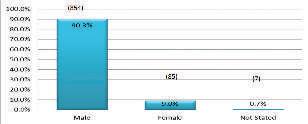
The highest response was from Corporate members (63.7%) followed by Graduate (33.2%), Fellow (3.0%) and Honorary Fellow (0.2%). About 90.9% respondents or 865 IEM members were working in Malaysia whereas only 20 members were employed overseas. The majority of respondents worked in the private sector, which represented about 79.6% of the respondents (758 engineers). Figures 5 and 6 show the nature of respondents’ current jobs and their employment sectors; most worked as consultants in the construction and properties sector.


About 77% of respondents were fully employed. As for education level, 69.8% of respondents held bachelor degrees, 19.8% had masters and 5.4% had Ph.D qualification. The majority of respondents were from the civil and structural engineering discipline at 46.9%, compared to mechanical 21.5% and electrical 19.1%. The remainder were from chemical, electronics and other engineering disciplines. Most of the respondents (63.5%) were local graduates while 34.2% respondents had studied overseas.
The survey shows that 52.8% of respondents were of the opinion that the fundamentals of undergraduate courses
were adequate for work (Figure 7); 66.3% agreed that communication skills should be a part of the undergraduate curriculum and 95.3% answered positively when asked if engineering was their own choice. Figure 8 shows the reasons for choosing engineering as a career. The majority did so because of their interest and ambition.


Thekeyprofilesofthesurveyrespondentscanbesummarised as follows:
• 63.7%wereCorporateMembersofIEM,33.2%Graduates, 3% Fellow and 0.2% Hon. Fellow




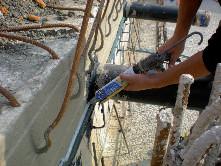
• 64.2% were P.E. with Board of Engineers Malaysia and 34.8% Graduate Engr.
• 35.3% of respondents were in major age group 31-40 years and 5.5% were senior citizens above 61 years
• 90.3% were male respondents and 9.0% were female respondents
• 90.9% respondents worked locally and 2.1% worked overseas
• 79.6% were in Private Sector, 10.3% Government and 10.1% GLC
• 32.0% were involved in Consultancy, 17.4% Management and least 1.9% in R&D and Sales
• 37.3% were employed in Construction and Properties, 12.6% Infra projects and least 0.8% Agriculture
• 77.0% were fully employed, 18.2% self-employed and 1.1% unemployed
• 69.8% had Bachelor degrees, 19.8% had Masters and 5.4% were PhDs.
• 49.6% were in Civil/Structural discipline, 21.5% in Mechanical, 19.1% in Electrical
• 63.5% were local graduates, 34.2% were overseas graduates and 2.3% did twinning programmes
The Employment Survey 2014 shows that the average annual remuneration of engineers increased by 27.28% from RM90,744.00 in 2008 to
















RM115,500.00 in 2014 (Figure 9). In terms of gender, male engineers commanded a higher annual income than female engineers (Figure 10).


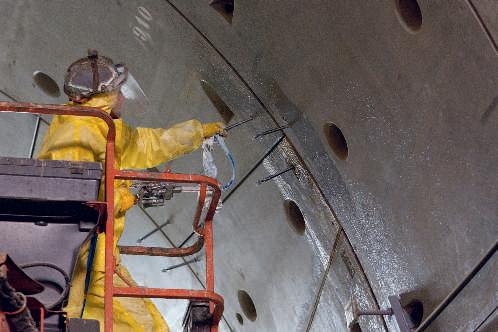
Figures 11 and 12 represent the average remuneration based on qualification level for both working engineers/corporate members and graduates. These show that engineers with PhD qualification earned the highest remuneration at 1 to 10 years working experience where 87.5% of the respondents were working in universities/colleges. However, for engineers with Masters, remuneration increased in line with their years of working experience.


Figures 13 and 14 show that both working engineers/corporate members and graduate engineers who were fully employed, had a high and stable increment of remuneration and this corresponded to years of experience as compared to self-employed engineers. This was reflected in the respondents’ number of fully employed engineers, which was 77% from various sectors of
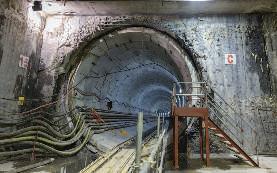
employment including the O&G sector. Meanwhile, only 18.2% respondents were self-employed, mostly in the constructionsectorandthesewerepossiblysmallcontractors or consultants.


Figures 15 and 16 represent the remuneration by location. Engineers who worked overseas earned a much higher salary than engineers working in Malaysia. There was a difference of up to RM170,000.00 in annual remuneration between local engineers and engineers working overseas with working experience between 21 and 25 years, with most working in O&G and manufacturing sector.


On job satisfaction, 72.1% of engineers said they were satisfied with their jobs and only 9% were dissatisfied with how demanding their jobs were. Unfortunately it seemed that 27.4% of respondents did not receive any encouragement to attain their Professional Engineer’s status. When asked if they had any intention to move away from engineering field, only 16.1% replied positive to this question. On the quantum of remuneration, only 48.5% of the respondents perceived it as favourable.
On a scale point of 1 to 5, respondents were asked to describe their jobs as Challenging, Rewarding, Stress and
Competitive. Figure 17 shows the results and this can be summarised as below:
• 90% of respondents perceived their job as challenging or very challenging
• About 63% of respondents perceived their job as rewarding or very rewarding
• Almost78%ofrespondentsperceivedtheirjobsasstressful or very stressful
• Almost 83% of respondents perceived their jobs as competitive or very competitive


Figure 18 shows the perception of women engineers on several issues related to their jobs and working environment. The findings are summarised below:
• 22% of women engineers said they had experienced gender discrimination
• Only 13.6% experienced gender harassment in the office or on site
• 25% respondents felt or perceived that their professional opinions were not accepted because they were women
• 55.4% of women engineers were given the opportunity to handle high profile projects
• 90.5% women engineers were confident to make decisions at meetings or give instructions at sites
From the choice of answer for most significant difficulties as women scientists/engineering professionals in the country, the three (3) most important issues that respondents chose were Work/Life Balance, Lack of Women in Senior Roles and Workplace Culture.
Several questions were aimed at assessing the perception of the respondents on current engineering programmes in universities and other related issues. Figure 19 shows that more than 25% of respondents were uncertain about these issues; 18% replied and agreed that the syllabus of some universities wereoutdatedandmismatchedwithcurrentjobrequirements.
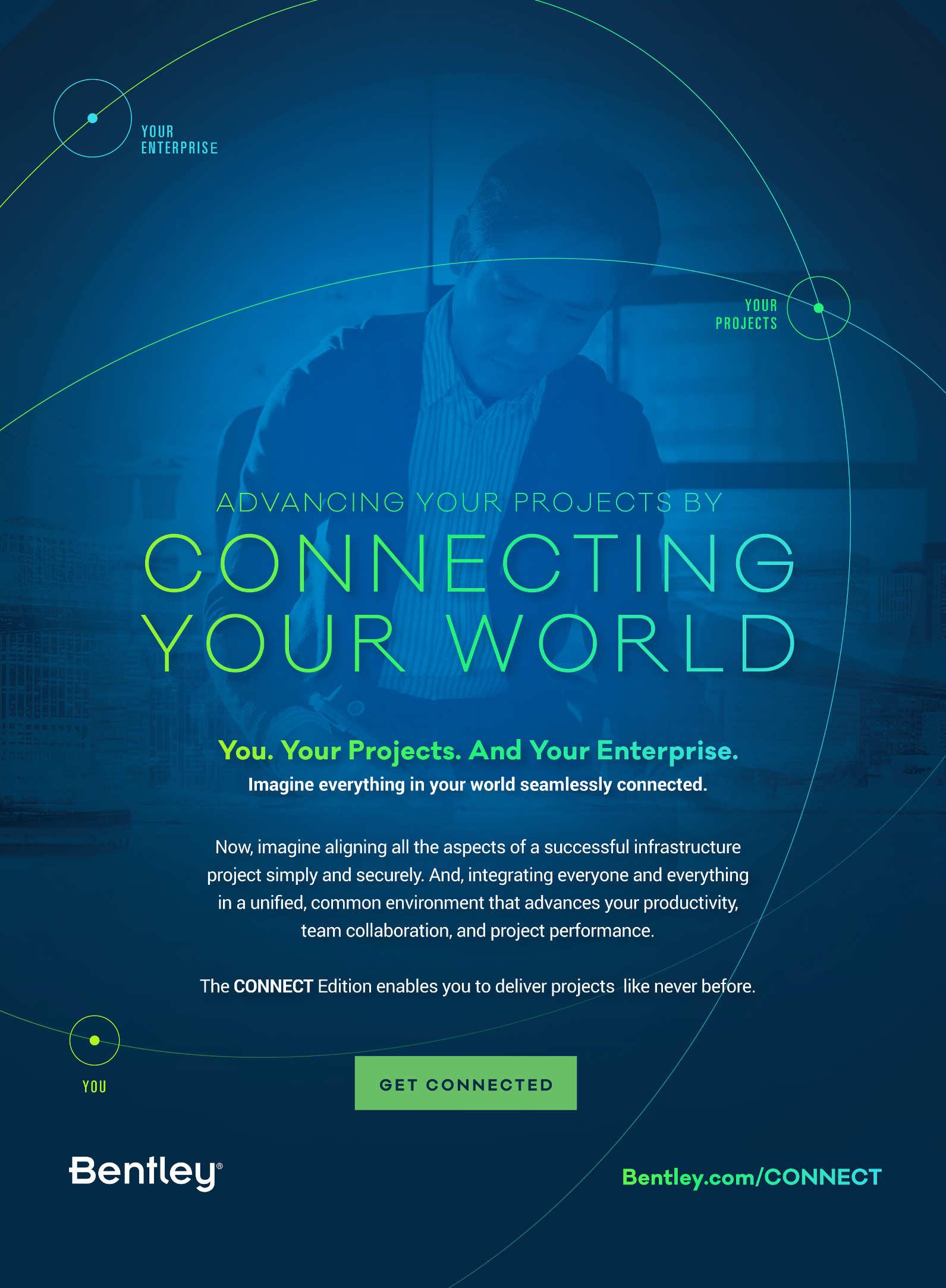
In this survey, about 21% of respondents answered that students should master one (1) additional global language besides English in order to improve their job competitiveness.

With regards to the shortage of engineers, most respondents were still divided on this issue but 25% slightly agreed that overall, there was a shortage and 14% slightly agreed that there was a shortage of engineers in some disciplines.
Figures 20 to 22 represent the respondents’ opinions on Green Building Technology. Most of the respondents were involved in or had contributed to the design/construction/ guidelineofGreenBuildingTechnology.Therewasawareness with regards to its codes of practice, design, production or system.
About 18.6% of the respondents strongly agreed that Energy Efficiency programme had been achieved.

When asked whether the Green Building developments had more risks than traditional buildings, most of the respondents were uncertain but there was a balance between the respondents who agreed and disagreed. About 19.4% agreed that there was a likelihood they would incorporate Green Building elements in their future projects. In the final question, 28% of respondents strongly agreed that Malaysian colleges & universities should offer more courses related to green technology in the construction industry.
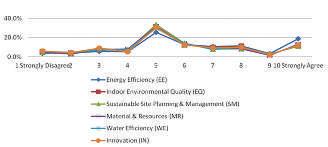
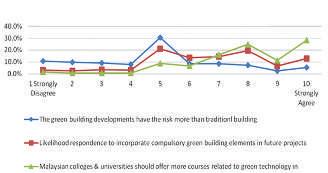
The sample size of 4.53% survey data obtained in this employment survey was relatively small, so it may not reflect a true picture of the engineers’ employment status, remuneration and perception on the current issues. However it is acceptable to conclude the engineer’s annual income had increased 27.28% in the last six years (2008 to 2014).
The response from women engineers (9%) was also very low compared to male engineers. Although almost 20% of women engineers said they had experienced some form of genderdiscrimination,thenumberhaddecreased,compared to previous surveys: 36% in 2007 and 25% in 2009. Hopefully, this number will be lower in future.
This survey should be continued in the future to further update and gather the latest information and data on employment statuses, awareness on current issues and technologies and as well to improve the welfare of engineers. It is also suggested that the Employment Survey be carried out online and to award a higher CDP hour in order to attract more engineers to respond and thus get a bigger sample survey which would help provide a more accurate analysis and a better understanding of engineers’ needs for further improvement.
Professional Engineer with Practising Certificate (PE with PC).
Professional Engineer who wishes to continue to be a Submitting Person in the consultancy practice must apply for registration as Professional Engineer with Practising Certificate (PE with PC) with Board of Engineers, Malaysia (BEM)
One-year grace period will be given to all Professional Engineer from 31 July 2015 to 31 July 2016 to decide whether to maintain registration as Professional Engineers or apply to be registered as PE with PC.
Existing Professional Engineers will be exempted from the following provided they have applied for registration as PE with PC before 31 July 2016.
• Passing the Professional Competency Examination (PCE);
• Paying the processing fee of RM50.00 and registration fee of RM200.00;
All Professional Engineers registered after 31 July 2015 requiring a PC are required to sit and pass the PCE. Those who do not required a PC will remain as a P.E.
For further information, please refer to the Board of Engineers, Malaysia.(BEM)
(Source: BEM Website: http://www.bem.org.my/v3/REA15.html)

Ir. Prof. Dr Ruslan Hassan, Ph.D FIEMFASCE is a CPESC and a DOE Registered EIA consultant. He teaches, consults and researches on Sustainability Design. The expressed views are of his own.
The term bauxite ore is deined by Valeton (1972) as bauxites which are economically mineable at present or in the foreseeable future, containing not less than 40-50% Al2O3 and not more than 20% Fe2O3 and 3-5% combined silica. Most bauxite samples found in Kuantan area are within this deinition as investigated by Rajah (1986). Indeed, as the Kuantan bauxite is characterised by a high ferric oxide content, it may be termed as ferruginous bauxite. It is conservatively estimated that the Kuantan deposit may contain approximately 70 million tons of crude, mainly low to medium ferruginous bauxite.
As reported in the Press, mining activity was carriedoutwithin238hectaresinFeldainvolving 70 land titles without any Environmental Impact Assessments (EIA) since individually these were lessthan250ha3each.Before15January2015, a full blown mining operation was going on in Bukit Goh near Gebeng, Kuantan, with crushers and excavators running 24 hours a day, seven days a week.
Haul trucks then carried the bauxite ore to KuantanPortforstoragebeforedeliverytoChina. Between January and April, 2015, 4.6 million tonnes were exported to China. From April 2 to May 23, 2015, the Pahang authorities inspected 43,278 bauxite lorries (an average of 816 a day) which were using the roads in Kuantan.
The annual output of bauxite went up from slightly over 200,000 tonnes in 2013 to nearly 20 million tonnes last year. Malaysia is now the world’s top producer, accounting for nearly half of the supply used in China’s massive aluminium industry.
With this surge in activity and without the impacts prediction and mitigating measures as normally required in EIA, there were noticeable damages to the environment, namely physically,biologicallyandsocio-economically. To address these issues, here are suggestions for consideration.
Land-use Compatibility: For any activity to be carried out it must be compatible with present land use of the area. There should not be any conflictwiththepresentlandusageandinmost cases, it is much easier if it is compatible but, if it is not, then mitigation measures must be carried out or the activity should not proceed at all.
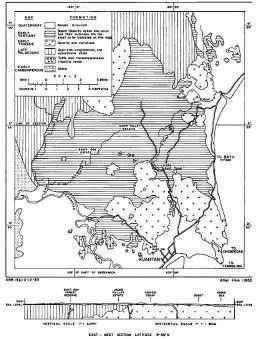
Fig.1: Geological map of the Kuantan area and cross-section of the Kuantan Basalt and Associated (Dolorite) DYKE (Rajah, 1986)
The land where the bauxite is found, is largely underlain by basalt. The present landuse is mainly oil palm and rubber plantations with primary and secondary forest in the northern part. The area of interest is clearly not in the forests away from populated settlements. Therefore, the activity should be done in phases and in a controlled fashion so as to not disrupt the present land-use pattern.
Hydrogeological: The analysis of the watershed affected by any activity has to be done, especially where the earth would be disturbed.






Activities like mining will normally result in an increase in runoff from the site. Prediction on the impact to the water courses can be made with respect to the changes in Water Quality Index (WQI) and mitigating measures have to be carried out. Some of the measures, with respect to mitigating the increase of suspended solids in the receiving streams, will be soil erosion and sediment control. The control is done through erosion and sediment control plans submitted by accredited Certified Professionals in Erosion and Sediment Control Plan (CPESC). Structural measures include source control (slope stabilisation), diverting the stream away from the disturbed areas, sediment fences and lastly, the sediment basin.






It is anticipated that suspended solids concentrations and hence turbidity of the water in the downstream rivers, would increase due to these earth disturbances. Use of unpaved roads, notably by heavy vehicles and during the rainy season, will lead to road damage and increased sediments in surface runoff. The extent of the increase will be influenced by the type of soiland weather conditions.




Monitoring of WQI will be carried out during pre-earthwork and earthwork and audited throughout. Any point and non-point sources of pollution must also be monitored so that these will not contribute to other parameters in the WQI such as BOD, COD, DO and ammoniacal nitrogen and phosphorus. The latter can lead to algal blooms in the receiving water body. The effluent from point sources must comply to whether it is above (Class A) or downstream (Class B) of the water intake point.
Air Quality: Similarly, the ambient air quality must be measured against Air Pollution Index and the parameters are measured before, during and postoperation. For this particular activity, Total Suspended Particulates (TSP) will be the concern because it can affect the API significantly. The other control is on dust emission from the movement of lorries and other vehicles.


The compliance and mitigation measures for physical environment can be simplified as follows:
Construction of drainage for all cut and fill slopes should be carried out immediately to prevent soil erosion and formation of deep gullies.





Jln Chan Sow Lin, 55200 Kuala Lumpur.
Contact: 03-9223 9332
Hotline: 1300-22-9332
Email: sales@3dtech.com.my




Surface and storm water runoff from the work sites should be channelled into proper drains and finally into the silt traps before it is discharged into waterways. Silt traps must be constructed to maximise retention time and water discharge be directed through an overflow weir/perforated pipe and onto rock gabion to reduce any potential for erosion of the banks of the waterways.
Regularly spraying of water using water browsers shall be undertaken over the temporary access and logistics roads and other barren areas of the site. This should be carried out daily during the dry season.
Control of dust levels by watering, road maintenance and speed limits.
The main vegetation communities include abandoned fruit orchards, rubber and oil palm plantation, bushlands and overgrown pasture for grazing livestock. The vegetation on the site is a result of anthropogenic influence and change in land use and land cover.
Thetreedatafromsecondaryforestadjacenttothesitecanbeanalysedto determine the species diversity of the area. Diversity indices provide important information on the rarity and commonness of species in a community. The most common measurement is the Shannon Weiner diversity index which can be used to compare diversity between habitat types.
The comparison can be between different habitats or a comparison of one habitat over time.
Shannon Weiner diversity index (H’) is calculated using the following equation:

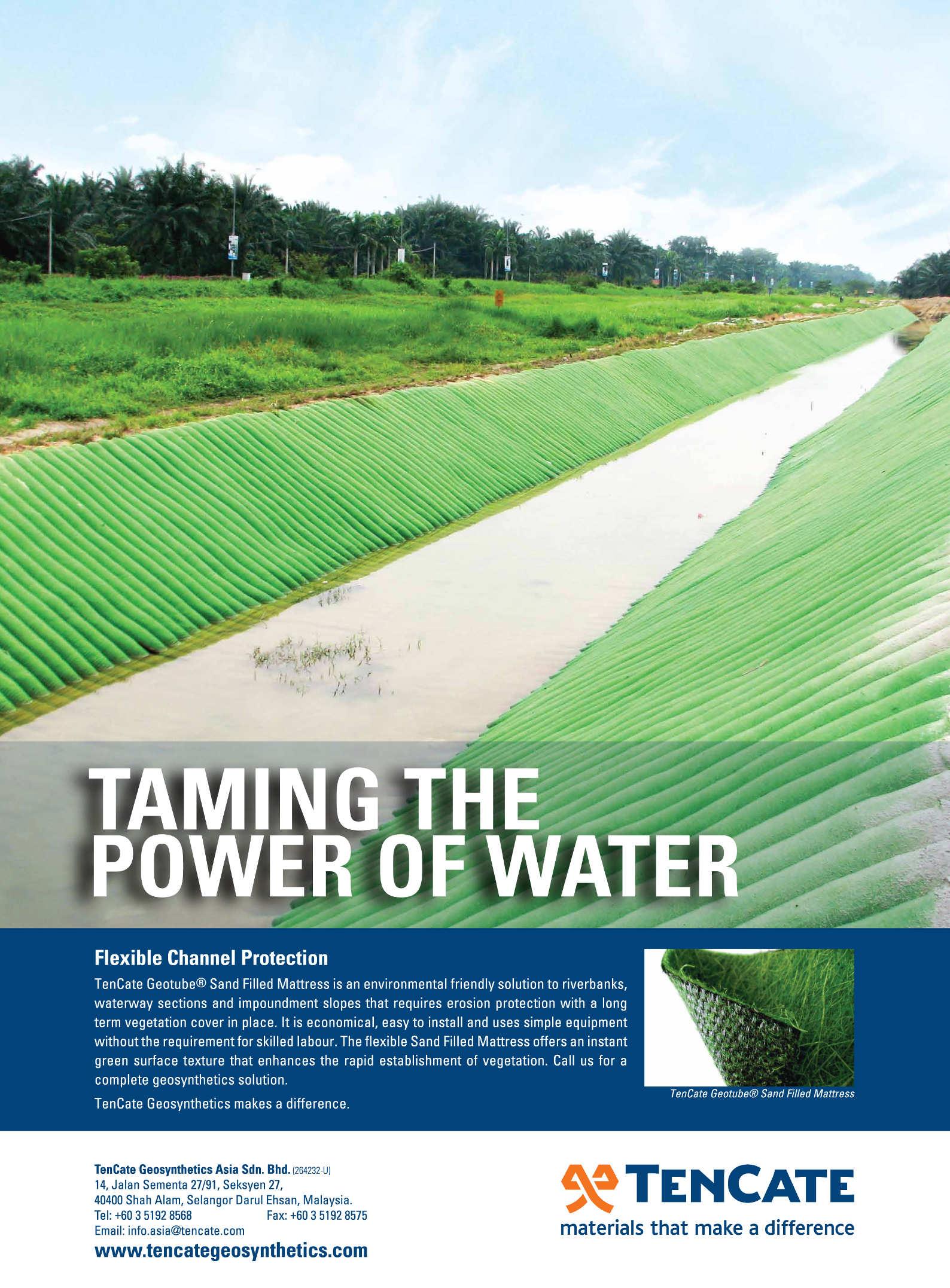

where s = the number of species pi = n/N,
n=total number of individual the ith species, and N=total number of individual of all species
Indices of biodiversity can be used to measure forest structure. Higher values of diversity index represent greater stability of community structure (Kohli et al., 1996). The compliance and mitigation measures for biological environment can be simplified as follows:
DURING MININGPOST MINING OPERATION
• Retain depression on site to capture runoff Retain existing well grown trees
• Protect trees fromdamage
• Erect fences and signs
• Use silt fencing to avoid runoff
• Maintain forested corridors
• Proper landscape design and habitat rehabilitation
• Collaboration with potential stakeholder
• Adopt “tree campus” concept
• Replant similar trees
• Introduce new trees
• Quick revegetation of used/backfilled areas and soil
• stockpiles with soil binding species
• Establish tree buffer zone
• Introduce enrichment planting programme
• Implement afforestation programme
• Retain, enhance and restore riparian habitats
• Erect appropriate fences; continuous maintenance required
• Continuously maintain the cleared zone outside the fence
• Encourage local community participation
Land development and infrastructure. Any land development must comply with the National Land Code and an activity such as mining should be carried out when the land is designated for mining and not for agriculture or plantation use. There must be also a provision for investment in infrastructure so as not to burden the present road network. Traffic management must also be properly instituted. The compliance and mitigation measures for socio-economic setting can be simplified as follows:
• Consultation on bauxite mining issues is important to reduce the negative social impacts of mining.
• Local communities need to be empowered when decisions are made about natural resource management that affect them.
• Investin infrastructure development that benefits the communities.
• Assessment of social impact and community engagement.
• Provision of compensation for those disadvantaged or displaced by the mining operation.
• Fully integrated rehabilitation programme
• Rehabilitation objectives must be clearly defined.
• Standard rehabilitation procedures.
• Monitorand report rehabilitation results.
• Long-term or completion plan (self-sustaining system).
• Considerable financial provision for rehabilitation.
• Agreement on final land use with other stakeholders.
• Vegetation salvaged for use before mining.
The ecological concerns should be given a practical shape in any ethical decision. This value-centred concern has the ultimate objective for the universal common good of all beings. On the basis of the principle, that the repelling of mischiefispreferredtotheacquisitionofbenefits,wecanbuild the theory of abuse of rights governing the relations between neighbours. It provides that a person could be denied the exercise of a right if it causes excessive damage to others.
An activity or industry causing excessive environmental pollution, or other public damage might be stopped or curtailed even though this may cause economic loss to the owners of the business. A wrong must be redressed for the sake of justice, even though there may be economic benefits in the perpetuation of the wrong. The optimum point E, decided by people, is the choice for a balanced approach. Any activity which cannot be mitigated with minimum damage and at affordable cost, must not be allowed to proceed.

[1] Kohli, R. K., Singh, H. P. and Rani, D. 1996. Status of floor vegetation under some monoculture and mix culture plantations in North India. Journal of Forest Research. 1: 205–209.
[2] Rajah, S.S., (1986).GEOSEA V, Proceedings Vol.1,Geol. Soc. Malaysia,Bulletin 19, pp. 315-325.
[3] Valeton, I., (1972).Bauxites. Elsevier Publishing House, Amsterdam, 226p.
The SCIENCE AND TECHNOLOGY AWARD recognises Malaysian scientists with outstanding achievements and accomplishments. Candidates are to be recommended by the authorised representatives of the respective university or science institution.
Qualification of Nominee:
Must be a Malaysian citizen residing in the country and who has excelled in an area of study relating to natural sciences (excluding mathematics and clinical medicine), who:
a) Has made a major scientific discovery or discoveries which has contributed to the enhancement of scientific knowledge
b) Has made an original, revolutionary and important invention or
c) Has successfully solved a major technological problem with an economically viable solution.
Science and Technology Award:
Two (2) awards are conferred every year. Each consists of a Certificate of Award and a cash prize of RM30,000.00.
The SCIENCE AND TECHNOLOGY RESEARCH GRANT provides financial assistance to deserving young Malaysian researchers to undertake basic research. Candidates are to be recommended by the authorised representatives of the respective university or science institution.
Qualification of Nominee:
Must be an energetic and creative researcher, Malaysia citizen aged below 40, residing in the country, is engaged in a basic, fundamental scientific research field (excluding mathematics and clinical medicine) at a research facility in Malaysia, whose work has the potential to contribute greatly to the advancement of science and technology.
Research Grant:
Ten (10) to fifteen (15) Science and Technology Research Grants of not more than RM60,000 each. The total amount of grants is up to about RM300,000.00.
All submissions must be made through IEM before 31 May 2016, for endorsement. The contacts details are as follows:
Honorary Secretary, IEM
Bangunan Ingenieur, Lots 60 & 62
Jalan 52/4, 46720 Petaling Jaya, Selangor Tel: 03-7968 4001 Fax: 03-7957 7678
Email: sec@iem.org.my Website: www.myiem.org.my
For further details on the Awards, please contact the Organiser, whose address and contact details are as follows:
Malaysia Toray Science Foundation (MTSF) c/o Penfabric Sdn Bhd
Prai Free Industrial Zone 1 13600 Prai, Penang
Tel: 04-385 4151; 04-390 8157 Fax: 04-390 8260
Email: mtsf@toray.com.my Website: www.mtsf.org
The IEM Award Committee

The Young Southeast Asian Leaders Initiative
Ir. Sreedaran Raman is a Senior Assistant Director and Certiied Professional in Erosion and Sedimentation Control (CPESC) attached with the Department of Irrigation and Drainage Malaysia (JPS). He is currently serving IEM as the Council Member (2015/2016), Organising Chairman of IEM Engineering Week 2015 and committee member of IEM’s Standing Committee on Activities, Welfare and Service Matters and Water Resources Technical Division (WRTD).
(YSEALI) Professional Fellows is a vocational exchange programme organised by the US Department Of States for young professionals aged 25-35 from ASEAN countries,whoareleading change and innovation in civil society, the public or the private sectors.
Launched in 2013, YSEALI is US President Barack Obama’s signature programme to strengthen leadership development and networking in Southeast Asia. Through a variety of programmes and engagements, including US educational and cultural exchanges, regional exchanges and seed funding, YSEALI seeks to build the leadership capabilities of youth in the region, strengthen ties between the United States and Southeast Asia as well as nurture the ASEAN community.
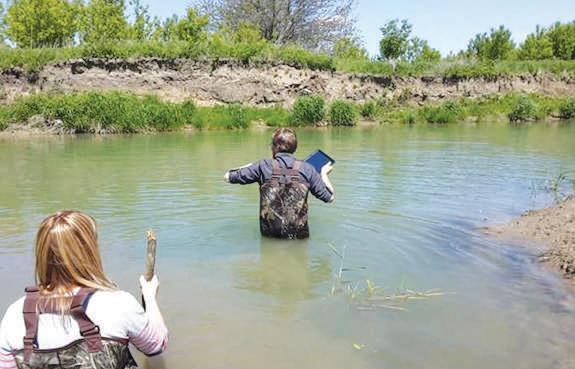
new developments, planning approvals and environment violation management especially on the reduction of erosion and sedimentations issues. Water quality inspections, monitoring and enforcement of local by laws and Environmental Protection Agency’s (EPA) laws in terms of water quality control, fell under the responsibilities of city’s water quality inspector.
I was privileged to be selected for a sixweek YSEALI Professional Fellow programme in the US and to connect with other participants from ASEAN countries in spring, 2015.
The programme’s main area of interest was related to four main thematic groups. Participants had to select one of given topics and address any local challenge. The thematic groups were Civic Engagement, Education, Economic Empowerment and Environmental Sustainability.
My choice was Environmental sustainability,specificallyaddressingerosionand sedimentation issues in Malaysian waters.
I was stationed for a month in the city of Dubuque, Iowa, located along Mississippi River in the US Midwest, to learn about the local government system and to grasp the knowledge and initiatives taken to reduce the erosion and sedimentation in local water bodies.
Mostly, I learnt about the day-to-day operations of the planning and engineering division of City Manager’s office in dealing with
Working together with the Water Quality Inspector gave me the opportunity to conduct river assessments. This was done by literally walking in the river to study the current conditions and to identify possible erosion and changes in the river.
Apart from that, the routine work to inspect on-going developments and attend to complaints of erosion and sedimentation violations or any other form of pollution, was done with the utilisation of online Geographical Information System (GIS) in my tablet. To further ensure that the water quality of rivers and other waterbodieswerewithinthesafezone,monthly tests were conducted at various water quality stations with mobile portable instruments and lab devices.
Upon completing my assignment in Iowa, I travelled to Washington DC for the Professional Fellow Congress, attended by 230 professional fellows from 45 countries.
The most memorable part of this programme was when President Obama hosted YSEALI participants at the White House.


After a brief introduction to us all, Obama gave a short speech and opened the floor for a question and answer session. I was among the 10 participants selected for the session and I took the opportunity to ask him about the leadership skills learned through his presidency.
His advice was that we should listen carefully to the judgments and during the decision-making progress, we ought to constantly revisit the outcome of the decision and be accountable for it. If it is crucial, then we have to make amendments to make it better.
The YSEALI Professional Fellow programme is certainly an excellent opportunity for young leaders to learn about the customs and vocational knowledgefromUSandotherASEANcountries.Asthealumniofthisprogramme, we will gain open access to a bigger network of professionals from ASEAN and other countries.
Various opportunities for grant funding are also available to be tapped to address local community challenges. I strongly encourage young engineers, especiallyIEMmembers,tojointheprogrammeandotherexchangeopportunities tobringadifferencetotheworkandcommunityweareassociatedwithaswellas promote world peace. n
(Editor’s Note: Footage of Ir. Sreedaran Raman’s question and answer session with President Obama can be viewed at http://youtube/gkFZ4ROaZho. Information on YSEALI programme is available at https://youngsoutheastasianleaders.state.gov/).
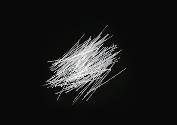








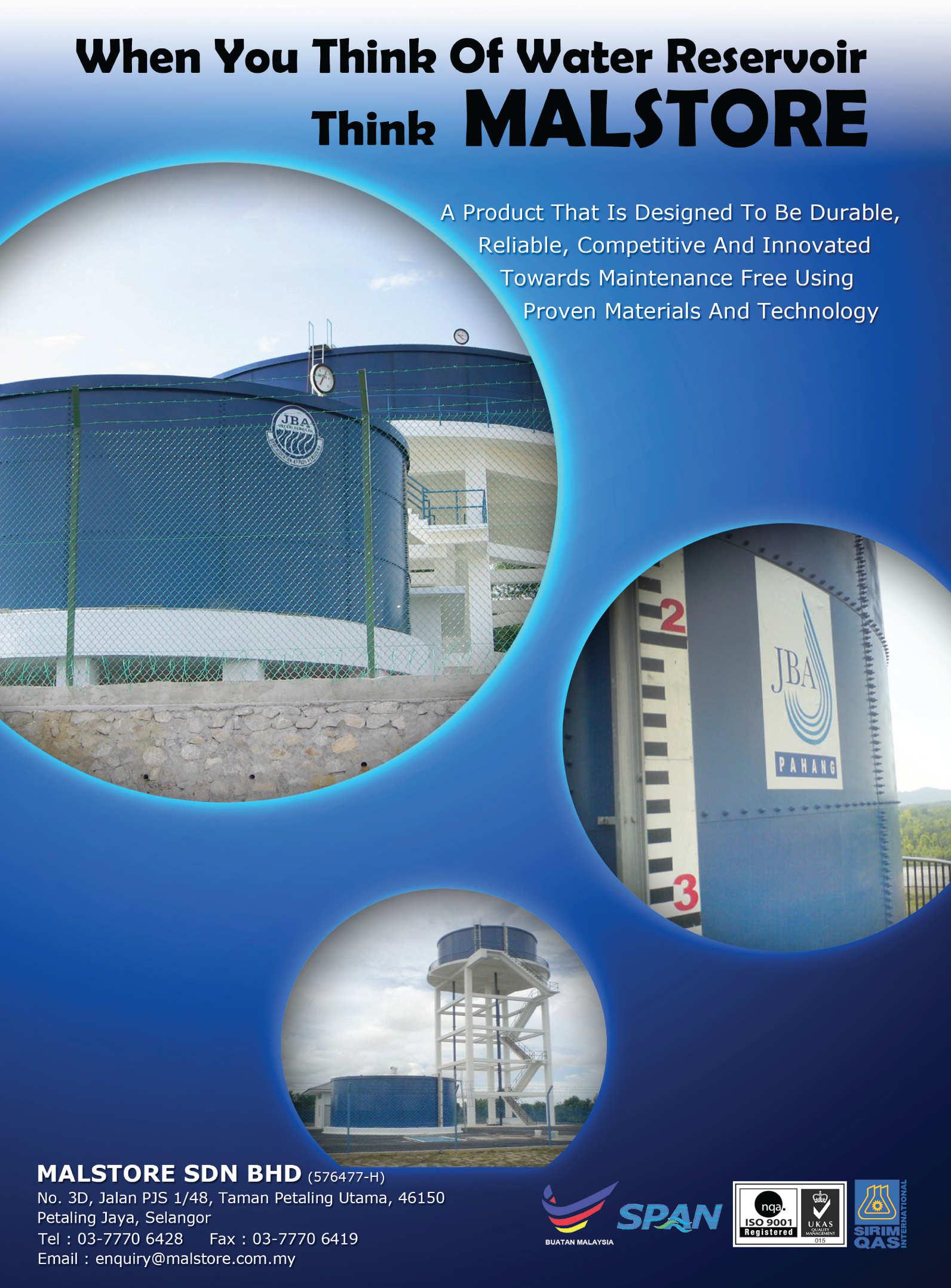

reported by Ir. Yeoh Jit Shiong
Ir. Yeoh Jit Shiong is Senior Interface Manager with MRT Corporation. He has a Bachelor Degree in Mechanical Engineering from Universiti Teknologi Malaysia. He currently serves on the Sub-committee in IEM’s Mechanical Engineering Technical Division.

Astate-of-the-art train assembly plant was set up in Hulu Selangor by SMH Rail Sdn. Bhd. to assemble Malaysia’s first MRT train cars.
Some information on electric train cars:
• Each train set comprises 4 cars. Each car has the capacity to carry 300 passengers, adding up to a total of 1,200 passengers
• During peak operation hours, the trains will be ferrying 24,000 people per hour in each direction
• 174 passenger seats in each train with 45 seats in each end cars and 42 seats in the middle cars
• Trains are disabled-user friendly, with six seats dedicated for disabled passengers
• Doors are also equipped with beeping sound and light to guide disabled passengers during closing and opening of doors
• Trains are equipped for fully automated, driver-less and conductor-less operation
• Maximum speed is 100km per hour and the average speed is 40km per hour
• The train interior and exterior finishes are non-flammable
First, participants were briefed on the safety aspects as well as the dos and don’ts when in the assembly area. SMH Project Director Neville Krogh talked about the impact
that the plant had brought to the community in the town of Rasa.
“SMH employs 95% of its work force from local talents. It has transformed locals from motorcycle mechanics to train builders,” he said.
He also shared his view that engineers should always work in the field to understand the root causes of problems. After he explained the train system and that in the assembly plant, the participants were given a tour.
The assembly plant is divided into a few areas: Loading Area
Car body starts at loading area. One Motor Car and one Trailing Car will start the production simultaneously.
Station 1
These cars will spend 4 days in Station 1 where thermal insulation, cable ducts interior, thread strip passenger room, HVAC unit and gangway are installed at platform level. At ground level, coupler, underframe part 1 piping and cable ducts are installed.
Station 2
Upon completion of works at Station 1, the cars will spend another 4 days at station 2 where cabling passenger room part 1, air duct passengerroom,windscreenwasher,driverdesk and destination indicator head are installed at platform level. At ground level, underframe part 2 piping, underframe part 1 cabling and underframe equipment are installed.
Station 3
At Station 3, the cars will spend 4 days for the installation, at platform level, of earthing, ceiling, side wall panel and end wall panel. At ground level, cabling and underframe part 2 cabling installation take place.






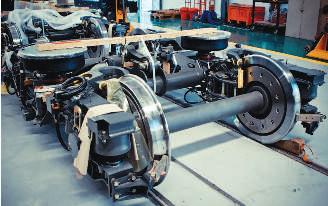
Station 4
At Station 4, these cars will spend the next 4 days where handrails, draft scree, handles, passenger seats, line covering, cove, fire extinguisher, rain gutter covers and labels are installed. This is the last station on the car body and there after they are transferred to Bogie Lines.



The cars will spend 2 days at Bogie Line 1 for pre-assembly of cabling and piping. They will then move to Bogie Line 2 where levelling tests and Bogie Assembly takes place over 2 days. Next, these cars go to Bogie Line 3 where wheel load test is conducted. This also takes 2 days. Lastly, the train will move to Bogie Line 4 where electrical single car testing, continuity and isolation testsare conducted.
Upon completion, the completed carbody of Mcar and Tcargoes to the Commissioning Line. Using turntable and transverse, these sets of cars are then combined with another Mcar and Tcar to complete 1 unit of trainset. The traincar is then sent for water testing at the water test area. This is the last test and when it’s completed, the traincar is ready to roll out.


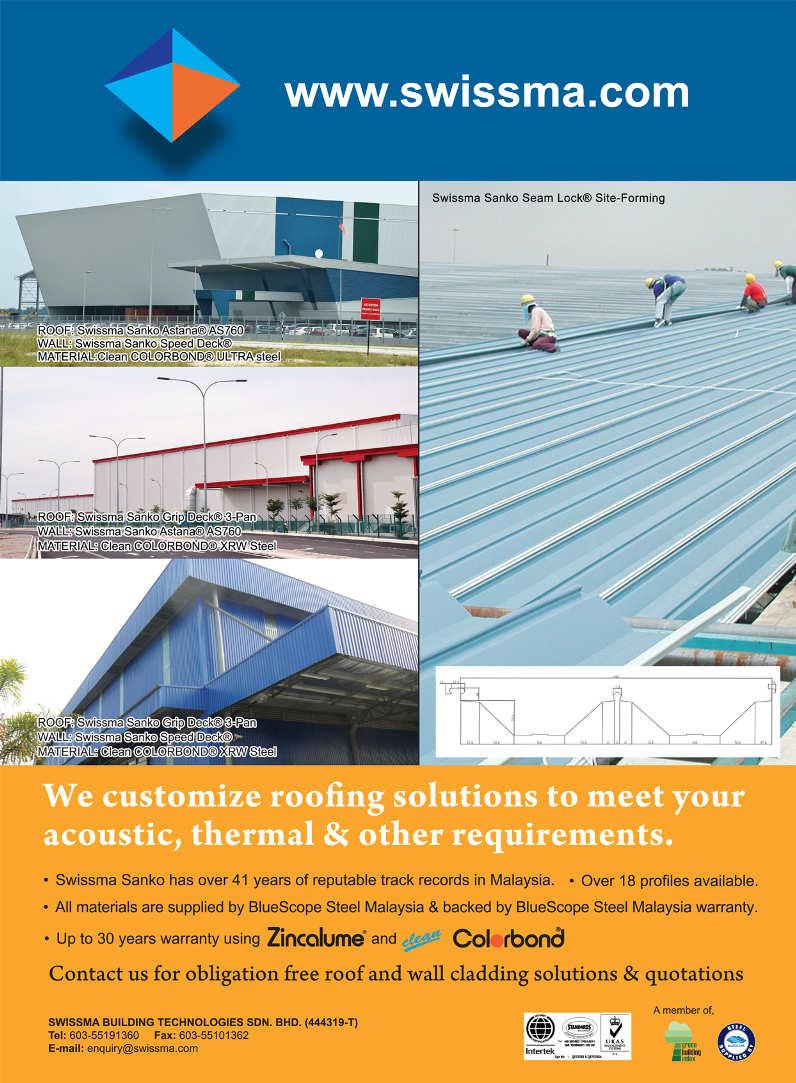

reported by Mr. Chong Fah Keen
Mr. Chong Fah Keen is a PhD student in the Department of Chemical and Environmental Engineering at University of Nottingham Malaysia Campus. His research focuses on developing computer-aided tools to design ionic liquids, speciically for carbon dioxide absorption purpose. He holds a First Class degree in MEng (Hons) in Chemical Engineering from the University of Nottingham.
On 20 June 2015, Mr. Chong Fah Keen was announced the winner of the 2015 Research Paper Competition. The Ph.D student from The University of Nottingham Malaysia Campus, had worked with Associate Professor Dr Nishanth Chemmangattuvalappil, Professor Dominic C.Y. Foo and Dr Fadwa Eljack (co-supervisor from Qatar University, Qatar).
The APCChE 2015 Congress was hosted by The Royal Australian Chemical Institute (RACI), Institution of Chemical Engineers (IChemE), Engineers Australia, and Institute of Professional Engineers New Zealand (IPENZ), in collaboration with Chemeca 2015 and International Conference on Coal Science & Technology(ICCS&T). Thisconference was held at the Melbourne Convention and Exhibition Centre (MCEC) in Melbourne, Australia, from 27 September to 1 October, 2015, with the theme “Chemical Engineering in the Asia-Pacific Century – Growth and Innovation”.

The said paper introduced a visual approach to shortlist suitable ionic liquid mixtures ascarboncapturesolventsystematically,priorto exhaustive experiment works. After Mr. Chong’s oral presentation during the conference, the session moderator enquired about the application and accuracy of the presented approach in designing actual ionic liquid mixtures. Mr. Chong replied that the approach was developed and currently being used by his collaborators from Qatar University to predict the suitable mixtures to capture carbon dioxide, and they provided data in return to improve the accuracy of the approach continuously.
After attending the conference, he said: “I would like to express my gratitude to CTED, IEM, for giving me this golden opportunity to present my work.” He said he was happy to be able to promote his research works and to exchange ideas with researchers from different backgrounds.
“It was an excellent experience for me to meet different audiences and to deliver my ideas to them. Through the feedbacks from the poster presentation, I realised how others could understand my work from different perspectives. This will be very helpful to me in outlining future presentations, either verbally or in writing,” he added. n

The annual general meeting of Mechanical Engineering Technical Division (METD) was held last october, 2015. In conjunction with the occasion, a pre-AGM forum was organised. It was presented by two speakers: Dato’ Ir. Dr Ali Askar Sher Mohamad, chief operating officer of Sustainable Energy Development Authority Malaysia (SEDA); and Mr. James Chua, executive director of GreenRE, Real Estate and Housing Developers’ Association Malaysia (Rehda). Presiding over the forum was Ir. Fam Yew Hin of METD.
FIRST SESSION
Dato’ Ali said SEDA was set up under the Sustainable Energy Development Authority Act in 2011, mainly to encourage the growth of RE (renewable energy). One of its main functions was to implement the Feed in Tariff (FiT).
Malaysia’s RE sources are mainly biogas, biomass, small hydro, and solar photo voltaic (PV). The PV installations can be on individual scale, community and non-individual (further divided to either above or below 425 kW). The original RE target was first mooted under the 8th Malaysia plan in 2011 targeted as 5% of the generation mix and RE as the “fifth fuel” in power generation (the others being natural gas, coal, large hydro and oil).
In 2010, the National RE Policy and Action Plan (NREPAP) set 2080 MW and 4000 MW as the respective targets for 2020 and 2030. However, the AMEM (Asean Ministers of Energy Meeting) in 2014 made two important decisions that changed the targets and classification of RE:
1. Large hydro and off-grid hybrid RE systems would be classified as RE.
2. The target for RE capacity was increased to 30% of installed capacity by 2020. (The old target was 15% of installed capacity by 2015).
With the change, Malaysia’s RE target capacity shot up from less than 300MW to almost 4,000MW. But going forward, the needed RE
target by 2020 would be 9,000MW (i.e. 30 % of 30GW capacity). Even with new large hydro plants coming onstream, a substantial shortfall is expected, unless other steps are taken to increase RE installations.
Since the RE implementation, total RE capacity today stands at 320MW, out of the 985 MW planned till end-2015. The actual RE mix is quite different from the RE plan. Much more PV capacity has been installed against planned, meaning 209MW till Sept 2015 against the 65MW planned for up to 2015. And leading by far is the individual PV category with 4,180 installations and generating capacity of 41MW.
As no FiT is planned beyond 2025, SEDA has the following plans to keep RE attractive to investors and meet the RE targets.
1. NetEnergy Metering(NEM):Utilityconsumers are allowed to install PV systems on their roofs for self-consumption, with the balance being exported to the Grid, and then net-off from their monthly bills at displaced cost.
2. Utility scale PV: PV plants with capacity 50 MW awarded by an auction process to the lowest qualified bidder.
SEDAdatashowsthatbiogasandbiomasshave some difficulties to bring online. Among the main challenges are: Feedstock (obtaining a secure, continuous supply of the fuel materials), grid connection (remote location of plant/feed stock and available grid connection capacity), financing, maturity of the RE plant technology and permit approvals (which could be up to more than a dozen different authorities.)
In the second session, Mr. James Chua took a broad sweep at RE, presenting an insight into some new technology, such as tidal power, wave-power and geo thermal.
The CETO plant in Western Australia went online in early 2015 and was the first grid-connected wave-power station. It used undersea buoys to pump a series of seabedanchored pumps, which in turn generated electricity.

Worldwide geo-thermal power capacity amounts to 12.8 GW. The countries having this are Iceland, Indonesia, China, El Salvador, Kenya, the Philippines and Costa Rica. These countries have high levels of geo-thermal activity which is an easily accessible and cost-effective RE. A geo-thermal plant has been planned in Ranau, Sabah. Reportedly, the first drill hole has been made and initial results could be promising.
In the Q&A session, Mr. Chua said Malaysian consultants and developers have more than a dozen green building
are overseas systems, such as LEED, Green Mark, etc. In Malaysia, we have these to choose from: Green Rating Scheme; CIDB’s Green PASS; GBI (Green Building Index); and Rehda’s Green RE (Green Real Estate). n
Title: One-Day Course on “Vertical Transportation Systems”
15 Mar 2016
Organised by : Mechanical Engineering Technical Division Time : 9.00 a.m. – 5.30 p.m.
CPD/PDP : 7
Title: 1st Mentor Workshop 2016 - “Log Book Training Scheme - Guidelines for Mentors”
19 March 2016
Organised by : Standing Committee on Admission and Practical Training Time : 8.30 a.m. – 1.00 p.m.
CPD/PDP : 3.5
Kindly note that the scheduled events below are subject to change. Please visit the IEM website at www.myiem.org. my for more information on the upcoming events.




reported by Engr. Iianchelvan Polanippan, Grad. IEM
Engr. Iianchelvan Polanippan, is committee member of TUSTD. He is currently Assistant Director of Land Transportation Unit, Air Base and Maritime Branch, Public Works Department Malaysia.
The Tunnelling and Underground Space Technical Division (TUSTD) organised an evening talk on “Box Jacking in Urban Areas” on 8 October 2015. It was delivered by Mr. Don Hall, Managing Director, CREG Asia & Africa, and was attended by 70 participants.
The talk focused on a case study in Zhengzhou, China, and the planned works for the box jacking section of the Thomson Line, Singapore.
The Zhengzhou Project runs along Hongzhuan Road, crossing underneath Zhongzhou Avenue, a major arterial road in Zhengzhou. The total project length is 801m, which comprises cut and cover 232m, box jacking 105m, with the balance as open cut. There are four box tunnels crossing the road with the size of 7.4m x 5.65m and 10.1m x 7.45m (Figure 1).
The box tunnels were constructed allowing only 3.5-4.0m overburden and 1m spacing between tunnels.

The jacking of box culverts started on 16 February 2014 and was completed on 31 August 2014 (total tunnel length is 420m; 105m x 4 tunnels).
The soil profiles comprised soft alluvial, silty clay, slit, backfill, silty soil and compacted sand. The SPT value was approximately between 10 and 15. Ground water level was 5m below ground surface.
Two rectangular shaped tunnel boring machines (TBMs) of size 10.12m x 7.47m, and 7.42m x 5.67m (Figure 2) respectively were used. The machine was manufactured with multiple rotary cutterheads. The TBMs were equipped
with 6 spoke type cutterheads and positioned in a 3 x 2 formation (three cutterheads in a row) with overlapping, resulting in 90.7% coverage of the excavation face. Drag bits were mounted on the leading edge of the front shield to provide ancillary cutting to blind areas (9.3% of uncovered excavation face). High pressure water nozzles and fittings for pneumatic drilling were reserved in the bulkhead for improvement of cutting face coverage.
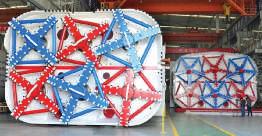
The thrust system comprised supporting rack and cylinders. The thrust cylinders were telescopic. The thrust cylinders had a working pressure of 30MPa and the maximum working pressure was 31.5MPa, with maximum thrust force of 7200T.
The segments were cast at site because of their large size and the difficulty in transporting them to site if they were cast at the manufacturing plant.
Mr. Hall said that by using larger box shaped TBM, shallow overburden (3.5m-4.0m) and tight tunnel spacing (1m) might create problems such as piggyback soil, box deviation and settlement risk. To address these issues, a few counter measures had been taken.
A system which enabled high efficiency slurry injection was introduced to minimise the risk of piggyback soil. The slurry injected into the annular gap at front shield and tail skin. Additionally, the box segments were also provided with slurry injection points (at crown and side walls) as part of friction reduction measures.
The box deviation issue was controlled by introducing 16 articulation cylinders for correction in horizontal and vertical directions. Furthermore, to inject dense slurry for deviation correction, 10 built-in grouting ports were placed along the front shield.
In order to reduce disturbance to the surroundings and to minimise the settlement risk, multiple rotary cutterhead box TBMs were used in this project. Mr. Hall mentioned that maximum settlement of 28.2mm was recorded upon completion. The result complied with the specification.
UPCOMING PROJECT – THE THOMSON LINE
Mr. Hall said that part of the box jacking work at the Thomson Line is a trial project to replace an open cut method. The reason for the change is to reduce surface disruption and traffic congestion at the affected area. The soil profile consists of fill, marine clay and GVI. He explained that the ground will be treated at both launch and breakthrough zones with 800mm diameter jet grouted piles.
SUMMARY
In general, a maximum jacking distance of 200m is possible without intermediate jacking stations. Currently the rectangular TBM is only suitable for soft ground and applicable to straight alignment. Further research and development is being carried out to manufacture TBM with segmental box tunnel lining to accommodate curvature alignment. n


Title: Half-Day Seminar on Concrete and Waterprooing Technology for Underground Construction
19 March 2016
Organised by : Tunneling and Underground Space Engineering Technical Division Time : 8.30 a.m. – 1.00 p.m. CPD/PDP : 3.5
Kindly note that the scheduled events below are subject to change. Please visit the IEM website at www.myiem. org.my for more information on the upcoming events.


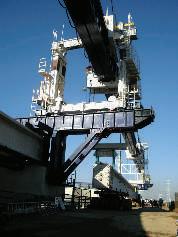
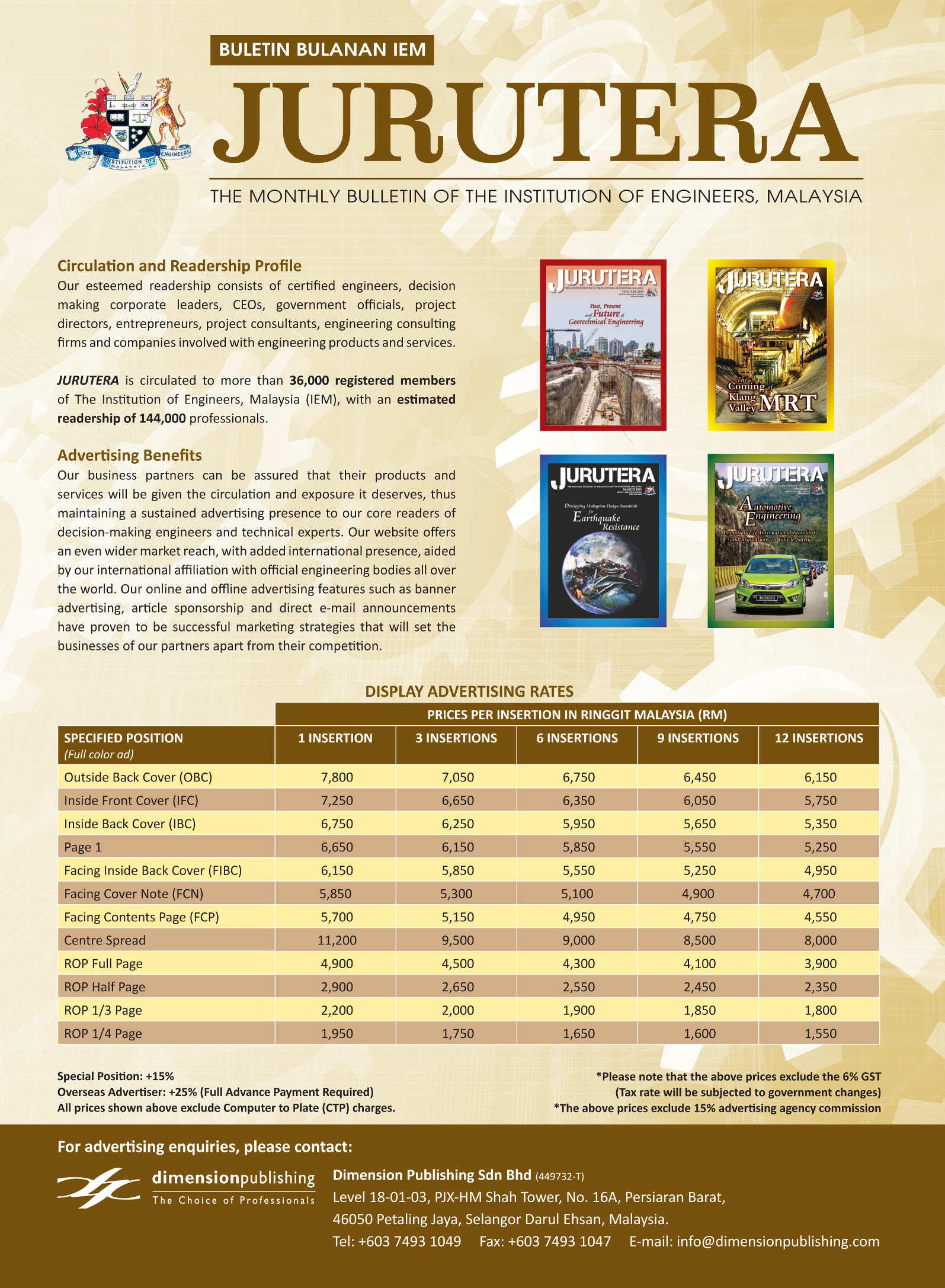


Ir. Chin Mee Poon www.facebook.com/ chinmeepoon
Chin Mee
is a retired civil engineer who derives a great deal of joy and satisfaction from travelling to different parts of the globe, capturing fascinating insights of the places and people he encounters and sharing his experiences with others through his photographs and writing.

We are pleased to announce that a travel coffee-table book, published by IEM, is now available for purchase at the Secretariat:
“A Globe-Trotting Engineer’s Footprints” by Ir. Chin Mee Poon
The selling price is as follows:
Members : RM50
Non-Members : RM55
All proceeds will go to the IEM Building Fund.
For more information, kindly contact IEM Secretariat via telephone 03-7968 4001 and email address at : sec@iem.org.my
Thank you.
Have you ever witnessed a tug-of-war with a rope 1.5m in diameter, 200m long and weighing 42 tonnes? It was definitely an experience for my wife and I on 11 October, 2015 in Naha, the prefectural capital of Okinawa in Western Japan. I had planned our visit to Okinawa to coincide with the annual 3-day Naha Festival on 10-12 October.
The tug-of-war was held on National Highway 58, a 6-lane road flanked by highrise office blocks about 500m from the southwestern end of the touristic section of Naha’s main thorough fare Kokusai-dori (International Street).
On the first day, a parade was held on Kokusai-dori. On the second day, another parade, on a grander scale, was held at noon; it involved, among other participants, 14 flag-bearing teams representing different parts of Naha Municipality. The young men in each team, wearing a black uniform called mumunuchihanta, took turns to keep a heavy wooden flag pole upright on their hands. The pole was beautifully decorated at the top and attached to it was a rectangular flag bearing the name of the team. Considerable strength and skills were required to balance the flag pole; some of the team members armed with two-pronged sticks, were ready to prop the pole in case it toppled. The parade is known as Ufunnasunei.
The tug-of-war started shortly after the end of the parade, with the highway closed to traffic. In just a few minutes, the crowd had swelled to such numbers that the two sections of the rope, each 100m long and dubbed male rope and female rope respectively, were almost completely hidden by a sea of human heads. The ropes had been brought to the site and laid on the road medians before dawn. It was separated by the road junction in the middle.
The 14 flags in the parade were placed in position, with 7 on either side of the junction, splitting the crowd into two groups: East and West. After some speeches by officials and a martialartsdemonstration,thetwogroupswere mobilised to pull the male and female ropes to the centre of the junction where their looped ends met. With much effort, the vertical loop of the male rope was made to pass through the horizontal loop of the female rope and a
one-tonne wooden pin was inserted through it, locking the two ropes into one of 200m in length.
Then two shoguns, accompanied by two aides each, were carried on wooden platforms on the shoulders of young men and moved over and along the length rope until they were about 10m apart at the junction. They then waged a ceremonial battle to symbolise the rivalry between East and West, followed by a brief face-to-face spar between two martial art exponents standing on the rope loops.
The actual tug-of-war lasted only 30 minutes or so, and the East sidewon. It was more of a fun event than a serious competition. Anybody could join in and pull with all his/her might or simplyrockforthandbackwiththerhythmofthe wave of motion. Some 140 smaller ropes, each as thick as one’s wrist and about 7m long, were attached to the giant rope for participants to grab and pull. So more than 5,000 people could take part in the pulling on either side, watched by more than 200,000 spectators! It was truly an amazing sight.

This tug-of-war could be traced back to 1712 but in the old days, it was only held on special occasions. In 1971, it was organised to mark the 50th anniversary of the formation of Naha Municipality and since then, it has been held annually. The event I witnessed was the 45th in the modern series of Naha’s giant tug-of-war. In 1995, Guinness recognised the rope used in the Naha Giant Tug-of-War as the world’s largest rope made of rice straw. Known locally as Naha Tsunahiki (那霸大纲挽), the tugof-war itself is not recognised by Guinness as the largest in the world probably because it is not a serious competition and does not follow the strict rules of the sport.
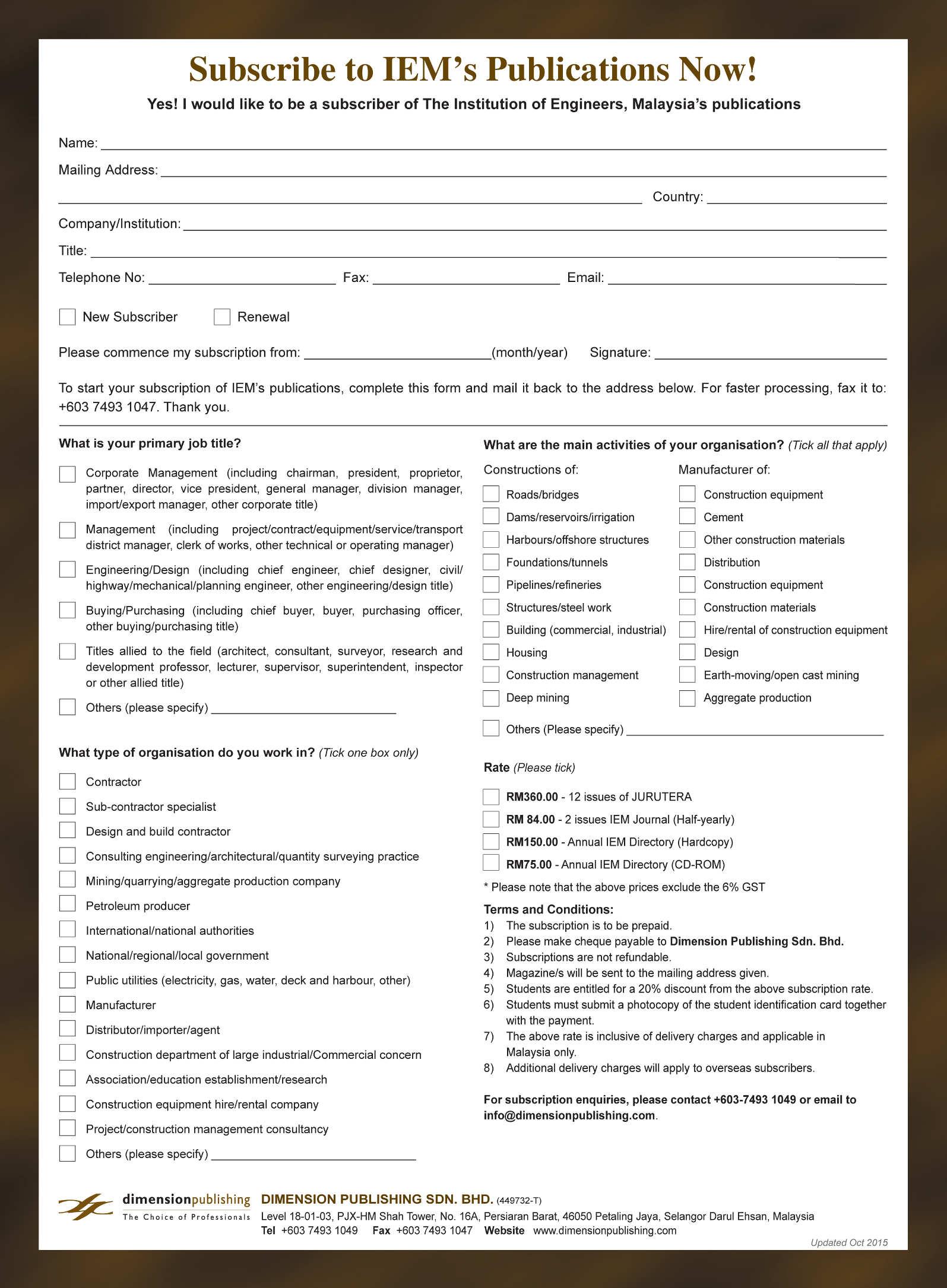
To All Members,
Tarikh: 24 Februari 2016
2016
BerikutadalahsenaraicalonyanglayakuntukmendudukiTemuduga Profesional bagi tahun 2016.
Mengikut Undang-Undang Kecil IEM, Seksyen 3.8, nama-nama seperi tersenarai berikut diterbitkan sebagai calon-calon yang layak untuk menjadi Ahli Insitusi, dengan syarat bahawa mereka lulus Temuduga Profesional tahun 2016.
Sekiranya terdapat Ahli Korporat yang mempunyai bantahan terhadap mana-mana calon yang didapai idak sesuai untuk menduduki Temuduga Profesional, surat bantahan boleh dikemukakan kepada Seiausaha Kehormat, IEM. Surat bantahan hendaklahdikemukakansebulandaritarikhpenerbitandikeluarkan.
Ir. Yam Teong Sian Seiausaha Kehormat, IEM,
PERMOHONAN BARU NamaKelayakan
KEJURUTERAAN AWAM
MAZURAH BINTI MAT DIAHBE HONS (UiTM) (CIVIL, 2008)
KEJURUTERAAN ELEKTRIKAL
ADNAN BIN MAHASANBE HONS (UTM) (ELECTRICAL, 2012)
AKMALASYRAF BIN TIK BE HONS (UNITEN) (ELECTRICAL, 2008)
AZMAN BIN ZAHARIBE HONS (MALAYA) (ELECTRICAL, 1997)
BAHARUDIN BIN ISHAKBSc (MISSOURI) (ELECTRICAL, 1992)
CHEE SENG HIUNGBE HONS (MULTIMEDIA) (ELECTRICAL, 2002)
FAIZUL RIZAL BIN MOHAMED TAZUDINBE HONS (UiTM) (ELECTRICAL, 2004)
HANG JEBAT MOHD FAUZIBSc (RENSSELAER) (ELECTRIC POWER-ELECTRICAL, 2007)
MOHD RIDZAL BIN OTHMAN BE (LOUGHBOROUGH) (ELECTRONIC & ELECTRICAL, 1993) PhD (LOUGHBOROUGH) (1999)
SITI HABSAH BINTI MOHD DZINBE HONS (USM) (ELECTRICAL, 2006)
KEJURUTERAAN ELEKTRONIK
HAW JIUN YEO BE HONS (HERTFORDSHIRE) (ELECTRICAL & ELECTRONIC, 2000) MSc (HERTFORDSHIRE) (DATA COMMUNICATIONS & NETWORKS, 2002)
NIK MOHD ZAITULAKMAL BIN MUSTAPHA BE HONS (UTM) (MICROELECTRONIC, 1998)
KEJURUTERAAN ALAM SEKITAR
MOHD FARHAN ARIFF BIN ANUAR BE HONS (UMP) (ENVIRONMENTAL, 2010) MSc (USM) (ENVIRONMENTAL, 2011)
KEJURUTERAAN INSTRUMENTASI & KAWALAN NG CHIEN HANBSc (MICHIGAN) (ELECTRICAL, 2006)
KEJURUTERAAN NAVAL ARKITEK HUD BIN HALIDBE HONS (UTM) (MECHANICAL-MARINE TECHNOLOGY, 2003)
PERPINDAHAN AHLI
No. Ahli NamaKelayakan
KEJURUTERAAN AWAM
38322ABD RAHMAN BIN GHAZALI BE HONS (UTM) (CIVIL,1999)
50703MUHAMMAD MAAMIN BIN ABDUL MALIK BE HONS (MALAYA) (CIVIL, 2011) ME (UTM) (CIVIL-STRUCTURE, 2014)
80780NAWALATTIAH BINTI MOHD MUKHTAR BE HONS (UNITEN) (CIVIL, 2006)
45298THAN WYE JINBE HONS (NEW SOUTH WALES) (CIVIL, 2010)
34342ZAILAN AZWAN BIN ZAINAL BADRI BE HONS (UiTM) (CIVIL, 2006) MSc (UiTM) (GEOTECHNIQUE, 2015)
KEJURUTERAAN ELEKTRIKAL
49227MOHD EFFENDI BIN AMRANME (HULL) (ELECTRONIC, 2008)
59901NORAINEY BT MOHD ZAINBE HONS (UTM) (ELECTRICAL, 2006)
36992 SONG YOKE CHIN BE HONS (UTAR) (ELECTRONIC, 2008) CONVERSION (UNITEN) (ELECTRICAL, 2012)
50710WAN MOHD RAFIQ BIN WAN MOHD RAIMI BE HONS (USM) (ELECTRICAL, 2010)
56518 ZUBAIR BIN THOLUDIN BE HONS (UTM) (ELECTRICAL-ELECTRONICS, 2006)
KEJURUTERAAN ELEKTRONIK
25647MAHIDZAL BIN DAHARIBE HONS (UTP) (ELECTRICAL & ELECTRONICS, 2002) PhD (UTP) (ELECTRICAL & ELECTRONICS, 2009)
75281MOHAMD HUZAIMY BIN JUSOH BE HONS (UiTM) (ELECTRICAL, 2004) ME (UKM) (COMMUNICATION & COMPUTER, 2007) PhD (KYUSHU) (2013)
51291YEOH KAI SIANGBE HONS (HERTFORDSHIRE) (ELECTRICAL & ELECTRONIC, 2002)
KEJURUTERAAN MEKANIKAL
48439FAHMEER BIN NGALIMANBE HONS (UTM) (MECHANICAL, 2008)
57105MOHD KHAIRUL ZAKI BIN ABDULLAH BE HONS (UTM) (MECHANICAL, 2008)
48104NOR HAZRIL BIN MOHD NOORBE HONS (UTM) (MECHANICAL, 2010)
48440SALMI BINSAMSUDIN BE HONS (UKM) (MECHANICAL, 2008)
34319 TAN CHOU YONG BE HONS (UPM) (MECHANICAL, 2001) ME (UNITEN) (MECHANICAL, 2005) PhD (MALAYA) (2009)
PERMOHONAN BARU MENJADI AHLI KORPORAT
KEJURUTERAAN BIO PERUBATAN
-BELINDA MURPHY BE HONS (MALAYA) (BIOMEDICAL, 2001) PhD (LONDON) (2006)
Adalah dimaklumkan bahawa terdapat kesilapan atas nama dan kelayakan ahli berikut dalam senarai yang diluluskan dalam buletin bulan February 2016. Nama dan kelayakan yang betul bagi calon adalah seperti berikut: -
KEJURUTERAAN MEKATRONIK
41075HARINDHARAN JEYABALANBE HONS (UNISEL) (MECHATRONICS, 2009)
KEJURUTERAAN MEKATRONIK
29170KUEH JOO KHENG, JUDYBE HONS (UTM) (CIVIL, 2006)
33682MUHAMAD KHAIRI BIN JALILBE HONS (UiTM) (CIVIL, 2008)
Title: 2-Day Course on “Fire Control Concepts & Design of Active Wet Systems”
21 - 22 March 2016
Organised by : Building Services Technical Division
Time : 9.00 a.m. – 5.00 p.m.
CPD/PDP : 13
Title: Half Day Seminar on Public Address System
22 March 2016
Organised by : Electrical Engineering Technical Division
Time : 9.00 a.m. – 2.00 p.m.
CPD/PDP : 3.5
Title: 1-Day Course On LiDAR Technology & Its Application In Engineering With A Case Study In Geotechnical Hazards And Risk Assessment
28 March 2016
Organised by : IEM Women Engineer Section
Time : 8.30 a.m. – 5.30 p.m.
CPD/PDP : 7
Title: Technical Visit to TNB REMACO Repair Centre
31 March 2016
Organised by : Mechanical Engineering Technical Division
Time : 8.00 a.m. – 1.00 p.m.
CPD/PDP : 3
Kindly note that the scheduled events below are subject to change. Please visit the IEM website at www.myiem. org.my for more information on the upcoming events.
79251SITI SOLIHA BINTI IBRAHIM
B.E.HONS.(UITM) (MECHANICAL, 2015)
79299 TAI YI XIAN M.E.HONS.(BIRMINGHAM) (MECHANICAL, 2009)
79292TAN BOON CHAIB.E.HONS.(UTEM) (MECHANICAL-DESIGN & INNOVATION, 2011)
79308TAN JEF LLOYDB.E.HONS.(UTAR) (MECHANICAL, 2010)
78419TAN KA HOEB.E.HONS.(UTM) (MECHANICAL, 2014)
79511 TAY SZE YANG
79402 NOORULASFALIZA BINTI JAFAR
79393 NUR AISHA BINTI JALALUL SAYUTI
79401NUR HAFIZAH BINTI SAFARIN
79400 SITI AIZATUL ILLY BINTI KEMAT
79399SITI MADIHAH BINTI RAZALI
B.E.HONS.(UTAR) (MECHANICAL, 2015)
78482TAY WEE HUATB.E.HONS.(MCGILL) (MECHANICAL, 2004)
79330WAN AZIM BIN WAN HOSSEN
B.E.HONS.(UPNM) (MECHANICAL, 2012)
79302WANG CHOO KENB.E.HONS.(MONASH) (MECHANICAL, 2010)
79351YAP LEE LIPB.E.HONS.(MALAYA) (MECHANICAL, 2014)
78878 YAP YOON LOY
78479ZULAZFAR HILMI BIN OTHMAN
B.E.HONS.(SHEFFIELD HALLAM)(AUTOMATION & MANUFACTURING SYSTEMS, 2004) M.E.(UTM)(MECHANICAL, 2015)
B.E.HONS.(UNISEL) (MECHANICAL, 2009)
KEJURUTERAAN MEKATRONIK
79544 CHONG TONG JIAN
B.E.HONS.(UTAR) (MECHATRONICS, 2015)
78868CHOO SHENGYIB.E.HONS.(MONASH) (MECHATRONICS, 2013)
79301TAN CHEE WEIB.E.HONS.(UTAR) (MECHATRONICS, 2015)
78471 KHAIRULANUAR B. KHOLIT B.E.HONS.(IIUM) (MECHATRONICS, 2007)
79534LENG CHIOU HAURB.E.HONS.(UTAR) (MECHATRONICS, 2015)
79529 LOW CHEON YING B.E.HONS.(UTAR) (MECHATRONICS, 2015)
79528LOW KOK CHIENB.E.HONS.(UTAR) (MECHATRONICS, 2015)
79508 WONG YI HONG B.E.HONS.(UTAR) (MECHATRONICS, 2015)
78889 YA'AKOB BIN YUSOF B.E.HONS.(IIUM) (MECHATRONICS, 2007)
KEJURUTERAAN PEMBUATAN
79248 AHMAD TARMIZI BIN OTHMAN B.E.HONS.(UITM) (MECHANICALMANUFACTURING, 2015)
79250KHADIJAH BINTI MOHAMED SABRI B.E.HONS.(UITM) (MECHANICALMANUFACTURING, 2015)
79249MOHAMAD FADZLIN BIN MOHAMAD FARIK B.E.HONS.(UITM) (MECHANICALMANUFACTURING, 2015)
78895MOHD ROHAIZAD BIN MOHD RAZALI B.E.HONS.(UTEM) (MANUFACTURINGMANUFACTURING MANAGEMENT, 2009)
79261 MOHD SHAHRULL BIN ABDULLAH B.E.HONS.(UMIMAP) (PRODUCT DESIGN, 2009)
78408MOHZANI BIN MOKHTAR
KEJURUTERAAN PERTANIAN
79024 SANG YEW NGIN
B.E.HONS.(WARWICK) (MANUFACTURING, 1995)
B.E.HONS.(UPM) (AGRICULTURAL, 1997)
KEJURUTERAAN PETROLEUM
79406AMIR ISMAIL BIN BASIRON
79397AMIR SABIRIN BIN ABDULLAH
B.E.HONS.(UITM)(OIL & GAS, 2015)
B.E.HONS.(UITM)(OIL & GAS, 2015)
79395ARDI BIN HUSSEINB.E.HONS.(UITM)(OIL & GAS, 2015)
79405 DANIELANTHONIUS ANAK JEFFREY ALI
79396FARAH SHAHIDAH BINTI ROSLI
79404MOHD RAHIQUE YASIN BIN KAMARUDDIN
79394MUHAMMAD FALIQ BIN TUKIMIN
79403MUHAMMAD NUR TAUFIQ BIN SHAMSUDDIN
B.E.HONS.(UITM)(OIL & GAS, 2015)
B.E.HONS.(UITM)(OIL & GAS, 2015)
B.E.HONS.(UITM)(OIL & GAS, 2015)
B.E.HONS.(UITM)(OIL & GAS, 2015)
B.E.HONS.(UITM)(OIL & GAS, 2015)
79392 NOOR AZRIN BIN MOHD RASHIDI B.E.HONS.(UITM)(OIL & GAS, 2015)
B.E.HONS.(UITM)(OIL & GAS, 2015)
B.E.HONS.(UITM)(OIL & GAS, 2015)
B.E.HONS.(UITM)(OIL & GAS, 2015)
B.E.HONS.(UITM)(OIL & GAS, 2015)
B.E.HONS.(UITM)(OIL & GAS, 2015)
79326SOW CHIA SHENB.SC.(ALBERTA) (PETROLEUM, 2011)
79398UMAR HAYAT BIN FADZULLAH
KEJURUTERAAN POLIMER
79327 ANG TZE KANG
B.E.HONS.(UITM)(OIL & GAS, 2015)
B.E.HONS.(USM) (POLYMER, 2006)
79008DR. TAN SEAH GUANB.E.HONS.(USM) (POLYMER, 2009)
P.HD.(USM)(POLYMER COMPOSITES, 2013)
KEJURUTERAAN TELEKOMUNIKASI
78893 MAS AMIRA BINTI ZUAL-KEPLI
78427AHMAD RAZMI BIN AHMAD SAID 1ST YEAR (IUKL) (CIVIL)
AHMAD SYAMIM BIN ABBAS 1ST YEAR (UTHM) (CIVIL)
78768AHMAD WAFIQ FIRDAUS BIN ZULKIFLI 3RD YEAR (UMP) (CIVIL)
78736AINAA BISYARAH BINTI MOHD YUSOFF 4TH YEAR (UMP) (CIVIL)
AINATUL NAIMAH BT ZAILAN SHUKRI 1ST YEAR (UTHM) (CIVIL)
78681 AINILADHWA BINTI MOHAMAD NGISHAR 2ND YEAR (UMP) (CIVIL)
AINUL ZAKIYYAH BINTI ZULKIFLI 1ST YEAR (UNITEN) (CIVIL)
AISHAH BINTI AMBOK SALLEH 1ST YEAR (UTHM) (CIVIL)
AKLILI NADHIRAH BT ASMAAZMIN RASHID 1ST YEAR (UTHM) (CIVIL)
ALDONRON SERBIN 1ST YEAR (UMS)(CIVIL)
ALJEFF VYNDERSON 4TH YEAR (UMS)(CIVIL)
ALVIN CASSIDY LAJANGANG 2ND YEAR (UMS)(CIVIL)
AMALINA BINTI AZHAR 1ST YEAR (UNITEN) (CIVIL)
B.E.HONS.(MALAYA) (TELECOMMUNICATION, 2012)
PERMOHONAN MENJADI AHLI SISWAZAH No. Ahli NamaKelayakan
KEJURUTERAAN AWAM
78858 ENG HUI YI
79373HARIZ RIDHWAN BIN MOHD ROSLAN
79371 TAN KIAN TUCK
B.E.HONS.(CIVIL & STRUCTURAL, 2012)
B.SC.(NOTTINGHAM) (CIVIL, 2014)
B.E.HONS.(EAST LONDON)(CIVIL, 2007)
KEJURUTERAAN ELEKTRIKAL
79372 YAP YU VUN
B.E.HONS. (NORTHUMBRIA) (ELECTRICAL & ELECTRONIC, 2012)
KEJURUTERAAN ELEKTRONIK
79264DR. KARTHIGAYAN A/L MUTHUKARUPPAN
B.E.(PERIYAR) (ELECTRONICS & COMMUNICATIONS, 2002) M.SC.(UMS)(ELECTRICAL & ELECTRONIC, 2005) P.HD.(UNIMAP)(2008)
PERMOHONAN MENJADI AHLI ‘AFFILIATE’
KEJURUTERAAN ALAM SEKITAR
79164ASRUL EFFENDI BIN ABDUL HALIM
B.SC.HONS. (UKM) (ENVIRONMENTAL SCIENCE, 2005)
PERMOHONAN MENJADI AHLI ‘ASSOCIATE’
KEJURUTERAAN AWAM
79263MUHAMAD RIDUAN BIN ROSLIN
DIPL.(PSIS)(CIVIL, 2010)
PERMOHONAN MENJADI AHLI SISWA
KEJURUTERAAN AWAM
AAINAA HATIN BINTI
AHMAD TARMIZI 1ST YEAR (UTHM) (CIVIL)
ABDUL MUIZ BIN
ABDUL SAIDI 1ST YEAR (UTHM) (CIVIL)
ADAM BIN AZIZAN 1ST YEAR (UNITEN) (CIVIL)
ADIBAH ALYA BT SHAHARI 1ST YEAR (UTHM) (CIVIL)
AFENDI BIN ZAHARI1ST YEAR (UTHM) (CIVIL)
AFIF NURDIYANA BINTI RAZAMAN 1ST YEAR (UTHM) (CIVIL)
AFIF SYAHMI B. NOOR AZHURIL 1ST YEAR (UNITEN) (CIVIL)
AFIQ AMSYAR BIN
ABDUL RAHMAN 1ST YEAR (UTHM) (CIVIL)
AFIQ FAKHRUL B. ANUWARZAKI 1ST YEAR (UNITEN) (CIVIL)
AFIQAH ZANFAH BT AHMAD ZAIDI 1ST YEAR (UTHM) (CIVIL)
AFIZULAKMAL BIN MOKHTAR 1ST YEAR (UNITEN) (CIVIL)
AHMAD AZAD B. ZULKIFLI 1ST YEAR (UNITEN) (CIVIL)
AHMAD AZFAR BIN ROSLAN 1ST YEAR (UTHM) (CIVIL)
AHMAD HUZAIFAH BIN MUHAMMAD YUSOFF 1ST YEAR (UNITEN) (CIVIL)
78663 AMELIAA/P VICTOR DASS 2ND YEAR (UMP) (CIVIL)
AMIRA BINTI AMEER 1ST YEAR (UMS)(CIVIL)
AMIRA SHALIHA BT MOHD BASIR 1ST YEAR (UNITEN) (CIVIL)
78751AMIRUL EZANI BIN RAMLI 4TH YEAR (UMP) (CIVIL)
AMYRAH SYAHYERAH BINTI KEIRUDIN 1ST YEAR (UTHM) (CIVIL)
ANDIK MOHD AZRIL BIN MOHD NASIR 1ST YEAR (UTHM) (CIVIL)
78748 ANG YIP HONG 4TH YEAR (UMP) (CIVIL) ANIS ASYIFA BT ZAMRI 1ST YEAR (UTHM) (CIVIL) ANISHAADZIHAN BINTI BAKRI 1ST YEAR (UTHM) (CIVIL)
ANN WONG 1ST YEAR (CURTIN) (CIVIL)
ANNUR DIYANAH BINTI BAHARIN TAHIR 1ST YEAR (UNITEN) (CIVIL)
ANZ PRISKA FELLA EDWIN 1ST YEAR (UNITEN) (CIVIL)
AQIL B. MOHD AZLAN 1ST YEAR (UNITEN) (CIVIL)
ARNIE FARHANA BINTI NORHALIM 1ST YEAR (UTHM) (CIVIL)
ASIYYAH BINTI HAZIH1ST YEAR (UTHM) (CIVIL)
AZA DIYANA BINTI ABDUL RAZAK 1ST YEAR (UTHM) (CIVIL)
78660 AZHROULA/L BAH PIYAN 2ND YEAR (UMP) (CIVIL)
78778 AZMIRA BINTI AB AZIZ 4TH YEAR (UMP) (CIVIL)
AZRULAFFAN BIN MUHAMAD RASHIDI 1ST YEAR (UNITEN) (CIVIL)
AZYAN AFIQAH BINTI MOHD SALLEH 1ST YEAR (UNITEN) (CIVIL)
BIBIYANA BINTI ABDULADIS 2ND YEAR (UMS)(CIVIL)
BONG KHI PNG, ALEXANDER 3RD YEAR (SWINBURNE) (CIVIL)
BONG KHI YII, CHESTER 1ST YEAR (SWINBURNE) (CIVIL)
BONG YAN PING2ND YEAR (UTAR)(CIVIL)
78779 CANDRA MENAN A/L NAGAPPAN 4TH YEAR (UMP) (CIVIL)
78807 CECELIAANAK LINGGANG 3RD YEAR (UMP) (CIVIL)
CHAI MING YUAN 2ND YEAR (OPEN) (CIVIL)
CHAI YEN KHAI 3RD YEAR (UTAR) (CIVIL)
CHALSTER WINNIAM 4TH YEAR (UMS)(CIVIL)
CHAN XI WUEI 2ND YEAR (SWINBURNE) (CIVIL)
CHAN XIN NIAN3RD YEAR (UTAR) (CIVIL)
CHEAH WEI SZE 1ST YEAR (UNITEN) (CIVIL)
CHEAH YIT HOE 3RD YEAR (UTAR) (CIVIL)
CHEN JUN KIAT3RD YEAR (UTAR) (CIVIL)
CHENG KAI JIAN3RD YEAR (UTAR) (CIVIL)
CHENG MOU CHUAN3RD YEAR (UTAR) (CIVIL)
CHEOW LI JONG 2ND YEAR (SWINBURNE) (CIVIL)
CHEW HONG CHENG 1ST YEAR (UNITEN) (CIVIL)
CHEW TING LIANG1ST YEAR (UNITEN) (CIVIL)
CHIA YONG ZHET 3RD YEAR (UTAR) (CIVIL)
CHIEW TOH MIN, GAVIN 3RD YEAR (SWINBURNE) (CIVIL)
CHIN SZE YIN, CINDY 1ST YEAR (SWINBURNE) (CIVIL)
CHONG HAN WEN 1ST YEAR (UNITEN) (CIVIL)
CHONG JAN CHIN 1ST YEAR (UNITEN) (CIVIL)
CHONG JUN JYEA, ANDREW 4TH YEAR (SWINBURNE) (CIVIL)
CHONG KIM WENG3RD YEAR (UTAR) (CIVIL)
CHOO WEN YI2ND YEAR (UTAR)(CIVIL)
78794CHRISTIRANIRA BAHANI 3RD YEAR (UMP) (CIVIL)
CHUA XIN ZHI 2ND YEAR (CURTIN) (CIVIL)
CHUA YI RONG2ND YEAR (UTAR)(CIVIL)
CHUAH JING MING 1ST YEAR (UNITEN) (CIVIL)
CHUAH SIONG YEE 3RD YEAR (UTAR) (CIVIL)
CLAUDIA PANTI ANAK PANGKAS 3RD YEAR (SWINBURNE) (CIVIL)
CLIVE JALSEY CLARENCE 1ST YEAR (UMS)(CIVIL)
DANIEL ISKANDAR SULAIMAN BIN RASIDI 1ST YEAR (UNITEN) (CIVIL)
78791DEBBIE CYNTHIA CLARENCE BOTITI 4TH YEAR (UMP) (CIVIL)
DELANEY DEFANNY DASING 1ST YEAR (UMS)(CIVIL)
78767 DEXSTER DUDU AK HANSOME 3RD YEAR (UMP) (CIVIL)
78700 DINIE AMNI BINTI MAHAMUD 2ND YEAR (UMP) (CIVIL)
78668 DIVYASREE A/P MUTHIAH 2ND YEAR (UMP) (CIVIL)
EASTHER LYNN JOLLY JAWATIN 1ST YEAR (UMS)(CIVIL)
EBENEZER MALAKIM4TH YEAR (UMS) (CIVIL)
ELFFIE BIN SIRITIN 1ST YEAR (UMS)(CIVIL)
ENJAY LAJIM 1ST YEAR (UMS)(CIVIL)
ER LIN CHUN 2ND YEAR (UTAR)(CIVIL)
78699ERIC JASON STANLEY 1ST YEAR (UMP) (CIVIL)
ERNI BINTI HASYIM2ND YEAR (UTHM) (CIVIL)
EVA LAILATUN NISA BINTI FATDILLAH 1ST YEAR (UNITEN) (CIVIL)
FAHIM BIN ZAHAR1ST YEAR (UTHM) (CIVIL)
78737 FAN CHIN YET 4TH YEAR (UMP) (CIVIL)
FANG ZHONG TONG1ST YEAR (UNITEN) (CIVIL)
FARIDZUAN BIN ZAHIDIN 1ST YEAR (UTHM) (CIVIL)
FARZANA BINTI MAIDIN 1ST YEAR (UMS)(CIVIL)
FATIN AFIQAH BINTI TAUFEK 1ST YEAR (UTHM) (CIVIL)
GOH YU YAN1ST YEAR (UTAR)(CIVIL)
GORDON JULIUS 1ST YEAR (UMS)(CIVIL)
GOVIN KUMAR A/L
MANIVANNAN 1ST YEAR (UNITEN) (CIVIL)
GUNAVATHY A/P
MURUGESU 1ST YEAR (UTHM) (CIVIL)
HALIMI NURUL ATIQAH BINTI HONAN 1ST YEAR (UTHM) (CIVIL)
78766 HAZIM ADLY HARUN
BIN HARUN 4TH YEAR (UMP) (CIVIL)
HIEW PERTH YEE 3RD YEAR (UTAR) (CIVIL)
78774 IZYAN SHAHIRAH AIMI BT SHAHARUDDIN 4TH YEAR (UMP) (CIVIL)
78764IZZATULHANIS BT ROSLI 4TH YEAR (UMP) (CIVIL)
JASREENA KAUR A/P HARJIT SINGH 1ST YEAR (UNITEN) (CIVIL)
JOSHUA EDWAYNE LIEW 1ST YEAR (UNITEN) (CIVIL)
JULIANA BT RAZALI 1ST YEAR (UNITEN) (CIVIL)
KANG CHING EN3RD YEAR (UTAR) (CIVIL)
KANTHAGURU A/L BALASUBRAMANIAM 1ST YEAR (UNITEN) (CIVIL)
KARTIKA BINTI HERMAN 2ND YEAR (UTHM) (CIVIL)
78800 KAVIRAJ A/L ANBARASAN 3RD YEAR (UMP) (CIVIL)
KEIRAN EYAK ANAK TUNGKU 2ND YEAR (UMS)(CIVIL)
78754KHAIRUNNISA BINTI MUHAMMAD HUSAIN 3RD YEAR (UMP) (CIVIL)
KHAIRUNNISA HAZWAN BINTI DAHLAN 4TH YEAR (UMS) (CIVIL)
KHOR JUIN HORNG1ST YEAR (UTHM) (CIVIL)
KOK BING XUN 4TH YEAR (SWINBURNE) (CIVIL)
KOK CHIEW YEE1ST YEAR (UTAR)(CIVIL)
KUEH CHERN YUAN, BRANDON 4TH YEAR (SWINBURNE) (CIVIL)
KUGAANN A/L
RAVICHANDRAN 1ST YEAR (UNITEN) (CIVIL)
78679 KUN CHEE YONG 2ND YEAR (UMP) (CIVIL)
LAILI FATIN BINTI ZAILAN 1ST YEAR (UTHM) (CIVIL)
LAM HOW CHUN3RD YEAR (UTAR) (CIVIL)
LAN JIAN PEI, EDMUND 3RD YEAR (UTAR) (CIVIL)
LAU SING WEI, KELVIN 2ND YEAR (SWINBURNE) (CIVIL)
LAW SIE HUNG, EDRIC 4TH YEAR (SWINBURNE) (CIVIL)
LAW ZHI YONG4TH YEAR (SWINBURNE) (CIVIL)
LEE JOO YEE 3RD YEAR (UTAR) (CIVIL)
LEE JUN HONG 2ND YEAR (UTAR)(CIVIL)
LEE KAH MIN3RD YEAR (UTAR) (CIVIL)
LEE SHI WEN3RD YEAR (UTAR) (CIVIL)
78670LEE SIN GIE2ND YEAR (UMP) (CIVIL)
78657 LEE YEN WAH 2ND YEAR (UMP) (CIVIL)
LEE ZHI HIN, EUGENE 1ST YEAR (UNITEN) (CIVIL)
LEE ZUNG SHYUAN, ROY 4TH YEAR (SWINBURNE) (CIVIL)
LEONG YEW CHOONG 3RD YEAR (UTAR) (CIVIL)
LETISHA UNA MURREE 3RD YEAR (SWINBURNE) (CIVIL)
LIANE BINTI ALIAMAT 2ND YEAR (UMS)(CIVIL)
78797LIANG KAI JUN4TH YEAR (UMP) (CIVIL)
78739LIEW PEI QI4TH YEAR (UMP) (CIVIL)
78798LIEW SIEW FANG4TH YEAR (UMP) (CIVIL)
LIEW ZHAN HANG 1ST YEAR (UNITEN) (CIVIL)
LILY KONG PEI SIA1ST YEAR (UTHM) (CIVIL)
LIM DAO YONG 3RD YEAR (UTAR) (CIVIL)
LIM FANG JINN3RD YEAR (UTAR) (CIVIL)
LIM GUO SHENG2ND YEAR (UMS) (CIVIL)
Note: Remaining list would be published in the April 2016 issue. For the list of approved “ADMISSION TO THE GRADE OF STUDENT”, please refer to IEM web portal at http://www.myiem.org.my.
Pengumuman yang ke-89
SENARAI PENDERMA KEPADA WISMA DANA BANGUNAN IEM
Institusi mengucapkan terima kasih kepada semua yang telah memberikan sumbangan kepada tabung Bangunan Wisma IEM. Ahli-ahli IEM dan pembaca yang ingin memberikan sumbangan boleh berbuat demikian dengan memuat turun borang di laman web IEM http://www.iem. org.my atau menghubungi secretariat di +603-7968 4001/5518 untuk maklumat lanjut. Senarai penyumbang untuk bulan Januari 2016 adalah seperti jadual di bawah:
930253 ANUAR BIN ADNAN
1033980ARLEENEANSHAM @ LEE KIM SENG
11 43832 AZIYATI BINTI YUSOFF
1207579AZIZAN BIN MD. SAAD
1321517AZIZULAZMI BIN KAMARUL ZAMAN
14 11109 AZMAN BIN ABU BAKAR
1511560BALACHANDRAN NAICKER
1602458 BONG YEN CHON
1733874BURHANUUDDIN BIN HJ OTHMAN
1817568CHAI SHOON LEONG
1937038 CHAN YEW FAH
2006273CHANG LEONG HAO
2120746 CHANG TAN CHIN
2217967CHEE KAR MING
2314181CHENG KEE HAUT
2426480 CHEONG TZUU SHYI
2515455 CHEONG YOON KWAN
2614919CHEW KAH HWAI
2704325CHIA PIT SHIN, EDWIN
2814888CHONG JUANG CHYI
2913845 CHONG WEI YU
3025415 CHOON TECK KIANG
3115356CHOW CHEE HENG
3233707 CHU CHEE YANG
3310850 CHUAI TECK
3421740CHUNG CHOW PIN
3543878ERRWAN BIN ABDUL RASHID
3612569EWEDY BACHI
3722096EZWAN BIN MOKHTAR
3815272FADZLAN SHAH BIN MOHAMED
3921845FAN KOCK KEONG
4023981GAN PING SIN
4111047GOH KAE WAN
4238039GOH KHENG WEE
4346865GOH SU KIN
4422659HABIL BIN MD. NOOR
4520197HANI ZAIDA BINTI ISMAIL
4622187HARDEEP SINGH CHAHIL
4704415HING EK LEE
4815357HOO CHEE SIAN
4923059ISMAIL BIN MAT NOOR
5066764KAMALARIFFIN BIN OTHMAN
5115414KAMARULZAMAN BIN ABU HASSAN
5258102 KASDI ANAK PULAI
5333876 KENNETH A/L SUNDARAJ
5424851KOH PENG CHUN
5503110KONG KIN PONG
5608312KONG SIN KOOI
5717791KUNG WAI LEE, FABIAN
5820372 LAI YEE KEIN
5913239LAU KOK KEE
6007826 LAU LEE YENG
6124718LAW HUI KIUK
6245867 LEE FEI HAN @ LEE KOT CHUEN, LENIOR
6323881LEE SHING SHYANG
6425878LEONG TUK WAI, DAVID
6525073LEOW CHEE KEAT, CHRIS
6621938LEW SAN CHONG
6756819LIM CHEE KIANG
6813215LIM CHEE KOK
6948513LIM CHEE MENG
7026863 LIM CHI AUN
7108818LIM CHOR PIN
7243083LING SIE ONG
7314866LOKE CHEE KEEN
7424079 MAH YAU SENG
7515197MASKAN BIN MD. HASSAN
7627545MAZLAN B. DINDI
7721576 MD YUSLAN BIN MD YUSOF
7830635MEHERON A/L SELOWARA JOO
7938018 MOHAMAD AMIRUL NIZAM BIN MOHAMED THARI
8021302MOHAMAD HATTA BIN ABU BAKAR
8112838MOHAMAD SALLEH BIN HAJI YASSIN
8246788 MOHD ADLI BIN ADANAN
8305404 MOHD AMINUDIN BIN MD AMIN
8469485MOHD FADLY BIN ASMAAI
8524312MOHD FARIS BIN ARIFFIN
8611777MOHD HISHAM BIN HASHIM
8725174 MOHD RAPHELAFFENDY BIN MOHAMED NAZAR
8880554MOHD RAZANI BIN MOHD RAZALI
8924197MOHD SANY BIN MD SO'OD
9050756MOHD SUFI BIN ABDUL RAHMAN
9177470 MOHD TARMIZI BIN CHE YAAKUB
9217608MOHD ZAHIDI BIN MOHD YAZID
9325559MOHD. HARDY BIN LAIDIN @ SAIDIN
9407442 MUHAMAD FUAD BIN ABDULLAH @ YEOH KEAT HIAN
9541502MUHAMMAD AZAHARI BIN MUSTAPHA
9660041 MUHAMMAD SAHRIZAN BIN MD SALLEH
9745265MUKHLIS CHUA @ CHUA CHING KOK
9833877MULIADY BIN CHE HAMAT
9924335NG CHIU MING @ ROLAND NG
10017352NG CHNG BOON
10106397NG KOK HWA
10225785NG SEAN LOK
10312215 NG YOKE KIM
10407000NGU MENG HO
10523178NIK AMIZAN BIN NIK YAHYA
10680212 NOOR HESHAM AZLEE BIN ABDULAZIZ
10705033NOR HASSAN BIN ISMAIL
10851277NORLY FARHAN ISA
10928208NURAZZURA BINTI MOHD FUZI
110 23886 PALANISAMY A/L THANJAGOUNDAN
111 26743 PATHMANATHAN A/L KRISHNAN KUTTY RAMAN NAIR
112 25681 PHANG SIN YEN
113 27139QUEK SWEE JIN
114 56822 RAJASELVAM A/L GOVINDARAJU
115 36363ROSIDISYAM BIN SAMSUDIN
116 36853ROSLI BIN ABU BAKAR
117 43183 RUSNIDA BINTI TALIB
118 16870SAW WOOI KOON
119 13505SCHUA BOON HWEE
12042365SDICK JOCKSING
12180586SEE GIN KOOI, SAMUEL
12207334SENATOR DATO' HIANG A LI
12317613SILAHUDDIN BIN SAIBANI
12469499 SIM WEI TAT
12518237SIRAJA BIN BASHORA
12641027SITI RAFIDAH BINTI MOSLIM
12708917SNOORDIN BIN MOHD YUSOF
12866770SOH KWONG CHEAN

12962189STANLEY BALANG AK PETER JANG
13009881SWONG HOCK CHUAN
13134061SYED RAFISZAN BIN SYED OTHMAN
13207068SYED SALIM BIN SYED ABU BAKAR
13308165TAI FONG NG
13416600TAN KANG CHU
13525027TAN LEE WEE
13625271TAN SOON LIANG
13759874TAN WEI KEAT
13813544TANG CHING CHANG
13939101TANG CHOON HAI
14021897TANG KWANG
14114756TAY GUAN KIEN
14216194TAY KU WAH
14316926 TENG YIEN CHEN
14436937TEO HIU HONG
14540010 TERRENCE SELVIN A/LABRAHAM PATTU
14606815THARAKAN MATHAI
14716774TIONG CHIONG ING
14835622 TOH YIK FUNG
14914417TU CHUAN FUK
15011656 TUNG CHUN YUNG
15110146VIMALANATHAN S/O PERUMAL
15265245WAN FOO KEONG
15332678 WAN SALLEHUDDIN BIN WAN ZAKIUDDIN
15415086 WAN THIAM HUAT
15566769WILLIAM WERA LUKAM
15617018WONG KING SING
15769483WONG LEONG HONG
15812051WONG MOK FAR
15907540 WONG TING YEW
16007039 WONG YII HENG
16149528YAP KHAI CHUANG
16278454ZAINORIZUAN BIN MOHD JAINI
16304582ZULKEFLEE BIN KHALIDIN
16447088ZULKIFLI BIN MOHAMED

